Anders Reventlov in Denmark: Automatic script on paper and walls
Danish artist Anders Reventlov has developed his abstracted style on walls and on paper since he started style writing in 1996, going through different artistic phases, figurative or conceptual, after his fine art studies. Reventlov focussed over the years on black and white works. Drawing since his childhood, the practice of doodles on a daily basis flows into his wallworks. To keep this particular energy and flow of rough drawing made absent-mindedly, as well as of quick tags and throw ups on walls, Reventlov uses different tools, like calligraphy ink, markers and spray paint. Including his drawings on paper as fragments for starting wall painting compositions, removed afterward, his method “Traces of action” combines perfectly two practices in an original way, creating dynamic written/drawn wall paintings, expressing the power of handwriting and automatic script. Reventlov is also a teacher and curator, deeply involved in the graffiti writing culture, and a major figure in it in Denmark. Lives and works since 12 years in Malmø, Sweden.
The background
Born in the City of Vejle in Denmark in 1984, Reventlov grew up with four sisters in a safe environment in the suburbs, in a town called Bredballe with only 10000 inhabitants. He never had a boring time, hanging out with kids in the streets in the sleepy town of the second-wealthiest neighborhood in Denmark. Some of his uncles were painting, his mother had always been pretty creative. As a kid, Reventlov already drew all the time, at first characters, stories, pictures from films. He was really inspired by movies and books, games and comic books with many details and drew a lot of humorist comics, landscapes, megacities, and violent dystopia. When he was 12 years old, he discovered graffiti writing through a book called „Graffiti in Denmark“ published in 1996, showing pieces by Dåser, CMPSPIN, DATO, ISOE, SWET, RENS, MOACrew, Bates AIO, Dae Toys, Cruel, Cres The Whap gang, Feys Bea, Vaugh Bode, Sabe Fys, MORE, TELE. During that time, Reventlov was introduced to the concept of having a tag by his cousin Boris. He started to think about a name, writing A.R.L, his initials of his full name, not knowing anything else about style writing at that time. He started to scribble and changed his name to a logo looking like a weird arrow, an AS with an arrow through it. Somehow, he thought it contained all the letters of his name, ANDERS. It was a bit later, in 1997, he started to draw sketches on paper as well. Later in 1999, he did his first piece with a spray can in the street and kept the first can he sprayed with until today. From then on, he tagged different names together with other writers, like ARL, AS, ZAB, (crime name) NAB (New Art Boy, legal name), DSG ( Danish scream graffiti), BesaOne, GEKS, GK crew GEISTOne (named after their favourite toy store in the city they came from). Skating and going around with his crew friends, they painted in the cities of Vejle, Bredballe, Horsens, Kolding, Middelfart and Fredericia, the so-called Triangle Area of Denmark.
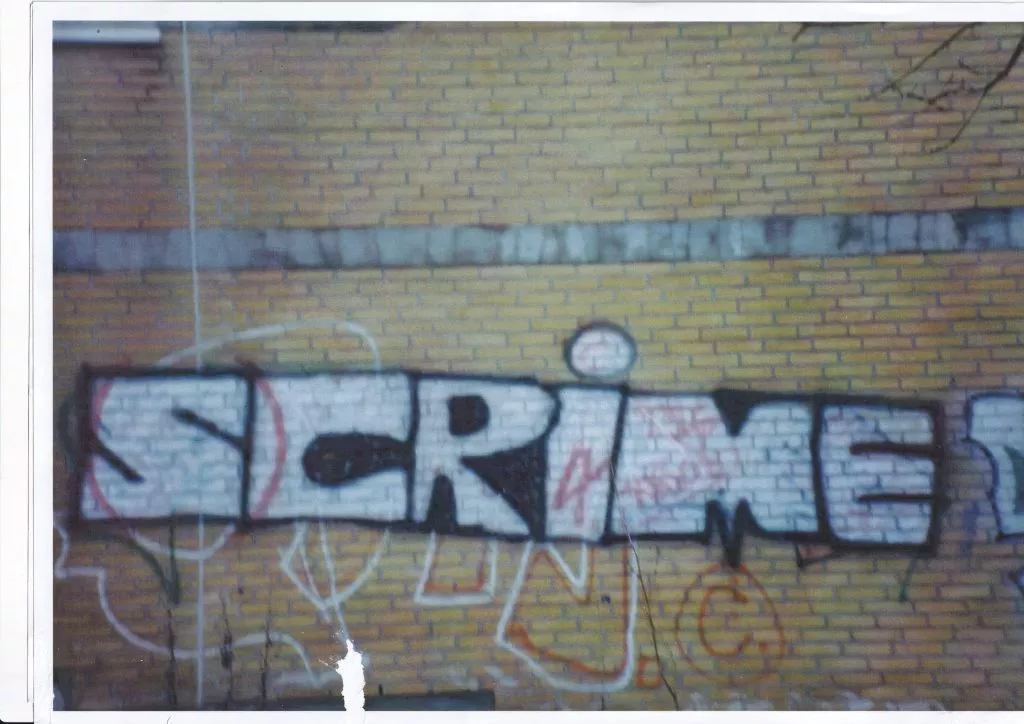
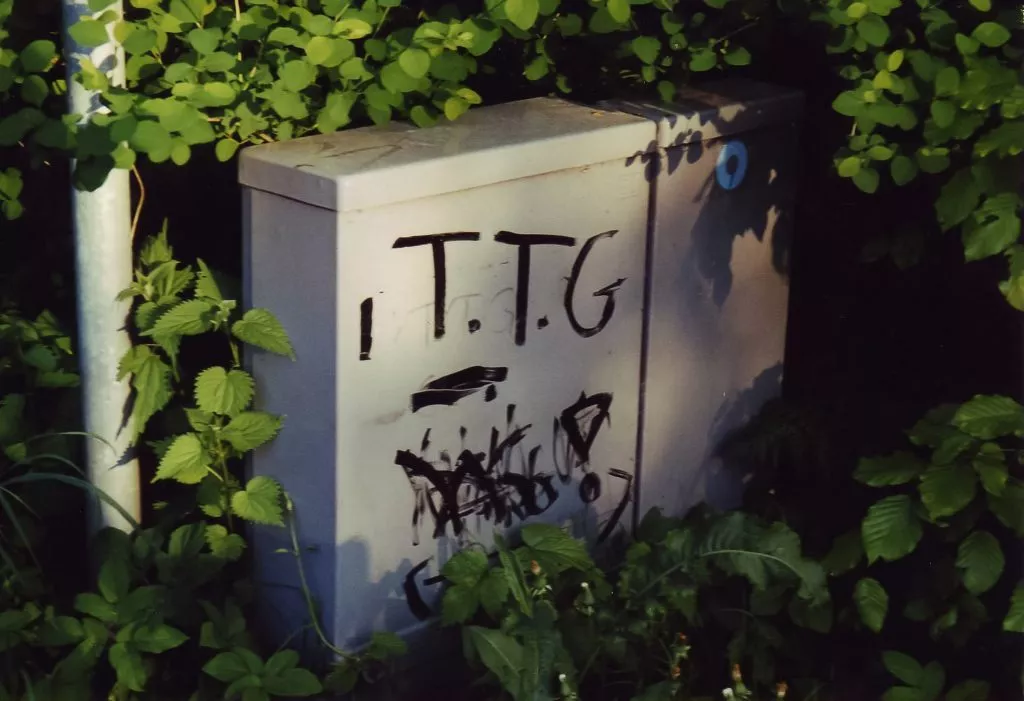
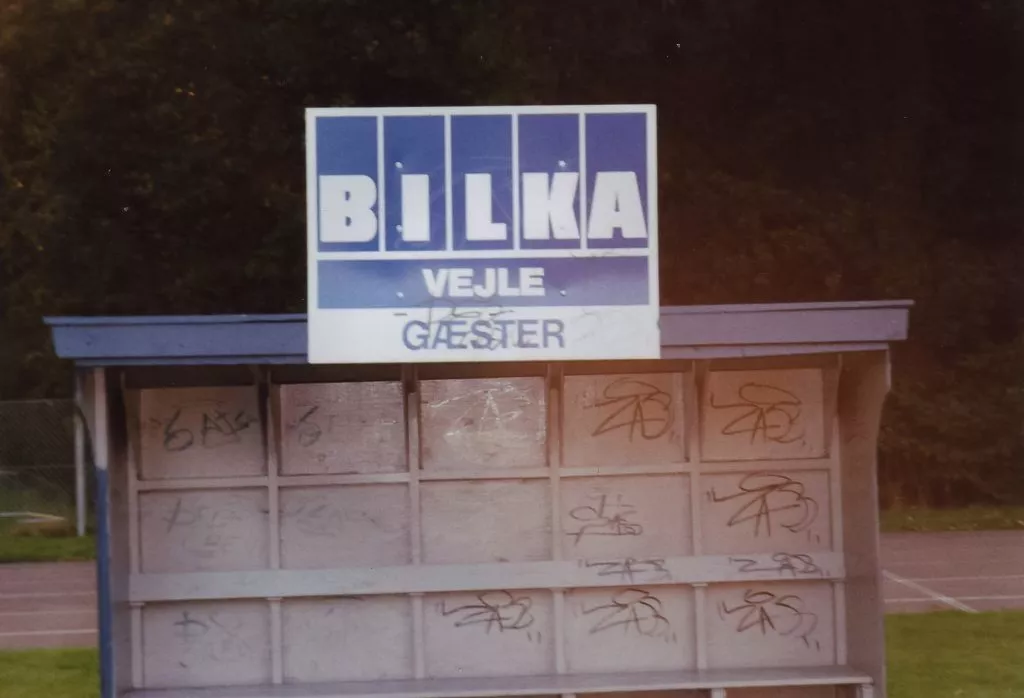
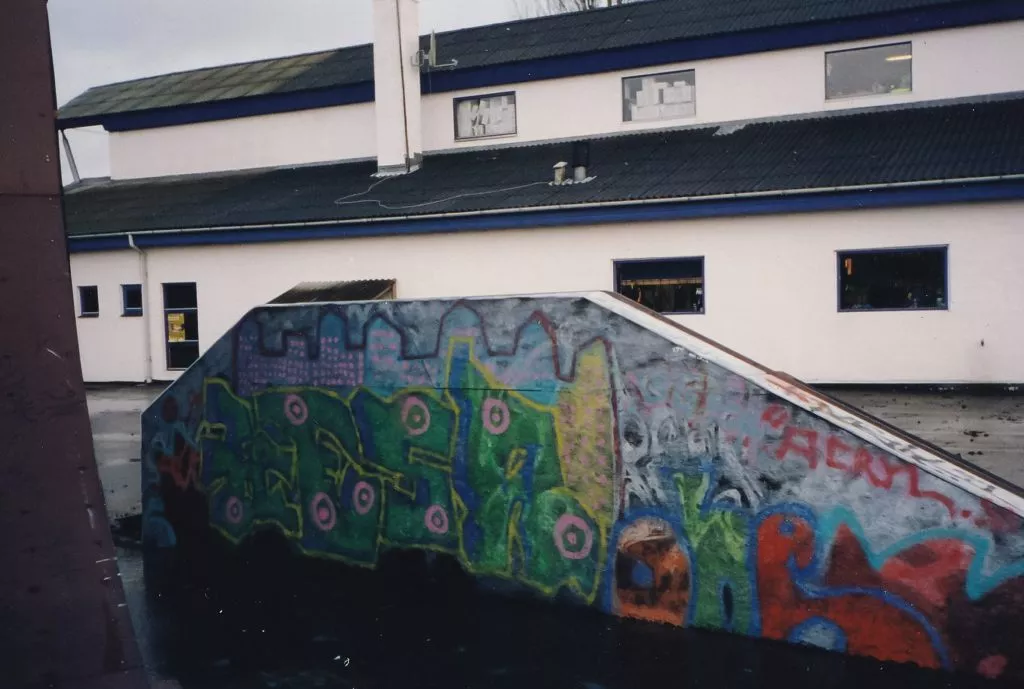
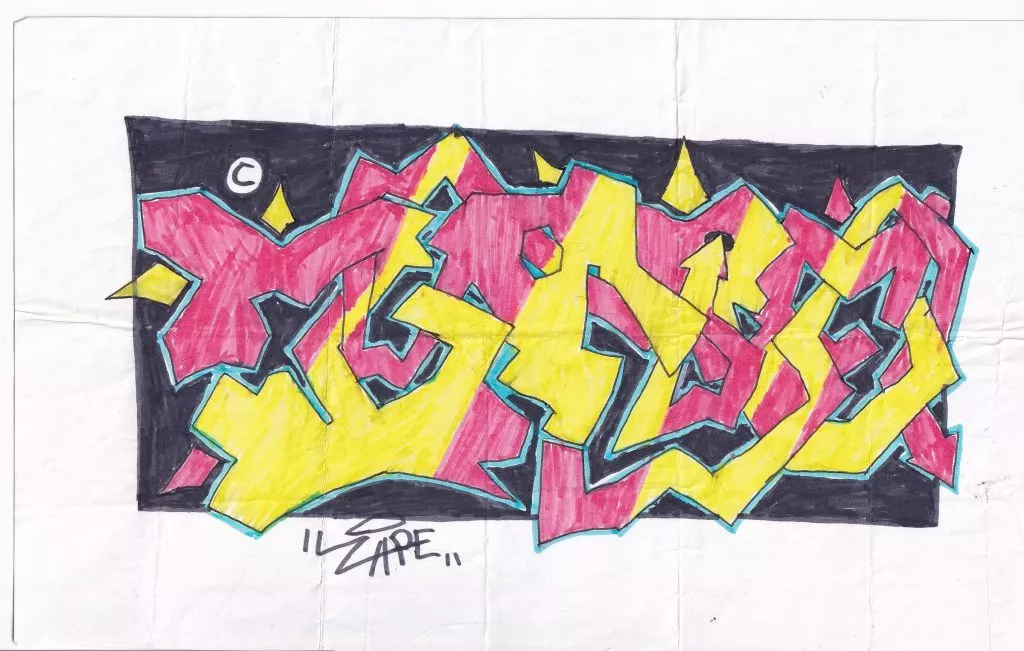
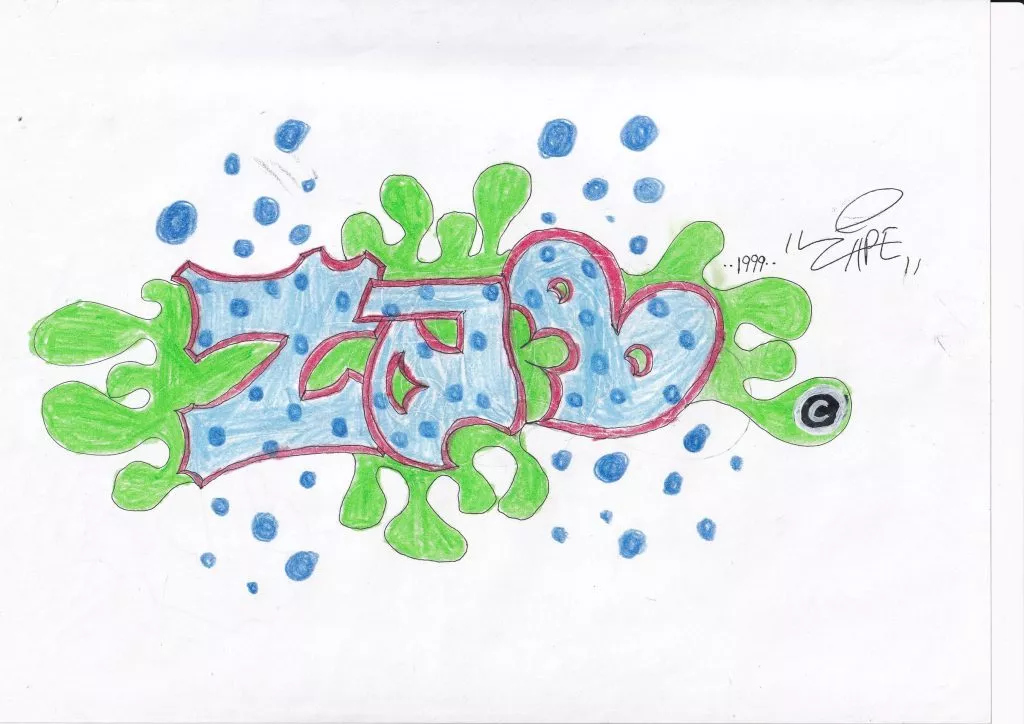
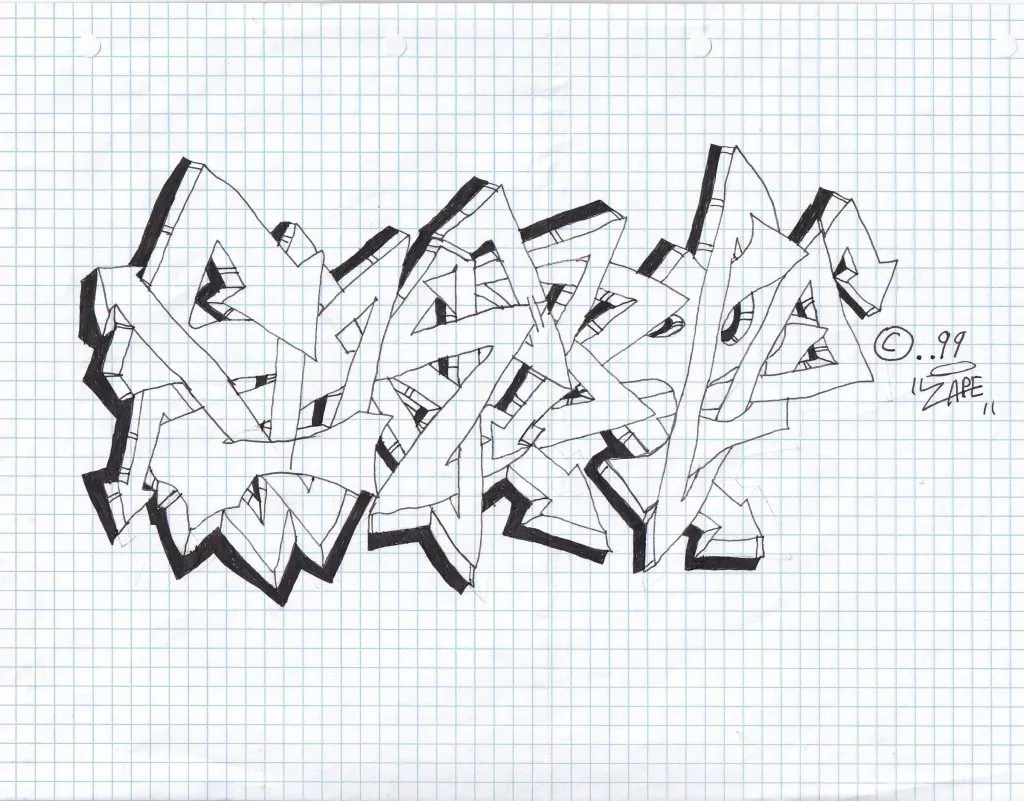
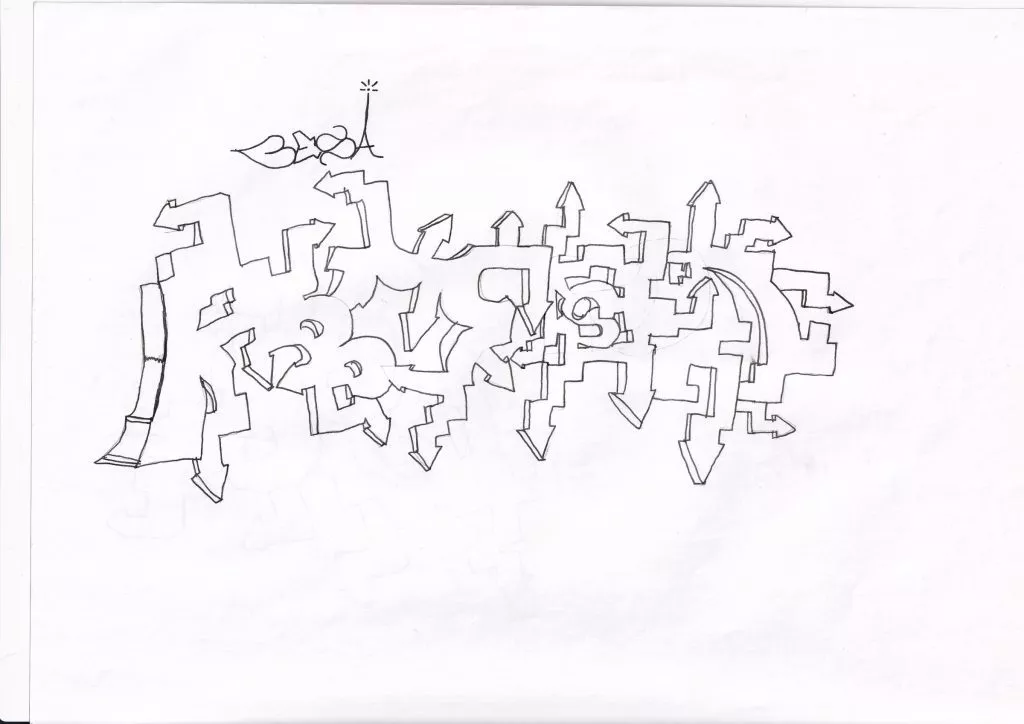
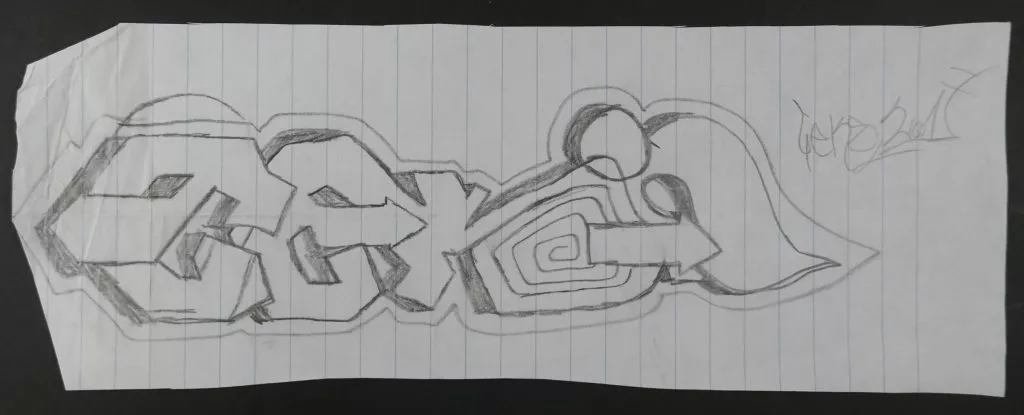
Inspirations from graffiti writers, illustrators and visual artists
In the early years, the graffiti writers who influenced him were Oma, BASi, Ånos, Toså, SEGA/Time, Segt and Kers from KR crew. They were kings to him, and at that time, around 2000, it was a small scene in this area consisting of circa 15 kids in the age of 12 to 17. Other admired writers by Reventlov were 88Ball, DAIM, ROXY, Dåser RESK VTO, ENOGS, EGÅS, DREK from Sow Crew, Isoe, Dato, Swet and ETCH. He saw these names in the city of Klding, Denmark, but also in the book „Graffiti in Denmark“. Resk and Enogs pieces were out of the ordinary in Reventlov’s eyes. But in the beginning, he was especially influenced by Egås, considering his style unique, he says today. Later, seeing HowNosms work in Rio de Janeiro in real life was a milestone for Reventlov. He also went to Basel many times to see the pieces from Dare, Swet, Dream, Smash. The Basel line and Switzerland were always interesting to him, especially because of the connection with the Danish graffiti scene.
Other artists, like illustrators and comic artists Asbjørn Skou, Will Eisnar, Moebius, Don Rosa and Vaughn Bode have inspired him since his childhood. Later, CMP One and spin05. A big eye-opener for Reventlov and his friend and writer Graat1999 with whom he is collaborating regularly for 20 years, was the catalogue of the „Urban Discipline“ exhibitions in Hamburg. According to him, it changed their mindset completely as well as the works by ZAST/ZASD/Thomas Bratzke, The Jazz style corner from Berlin, Christian Dinesen and EGS.
Abstract works have always impressed Reventlov since he discovered the work by Futura2000. But the first time he was really influenced by abstract graffiti work – not conventional graffiti – was a wall made by PHEO BEA, and TELE BEA, depicted in the magazine „UD og Skriv,“ (out to write). TELE has been a heavy influence on all of his own work. They studied at the same school for some years and also painted together.
His curiosity about visual arts made him discover modern and contemporary art movements and artists, like DALI, Cy Twombly, Asger Jorn and many more. As his favorite contemporary artist, he names the moderne Danish illustrator and graphic artist Palle Nielsen.
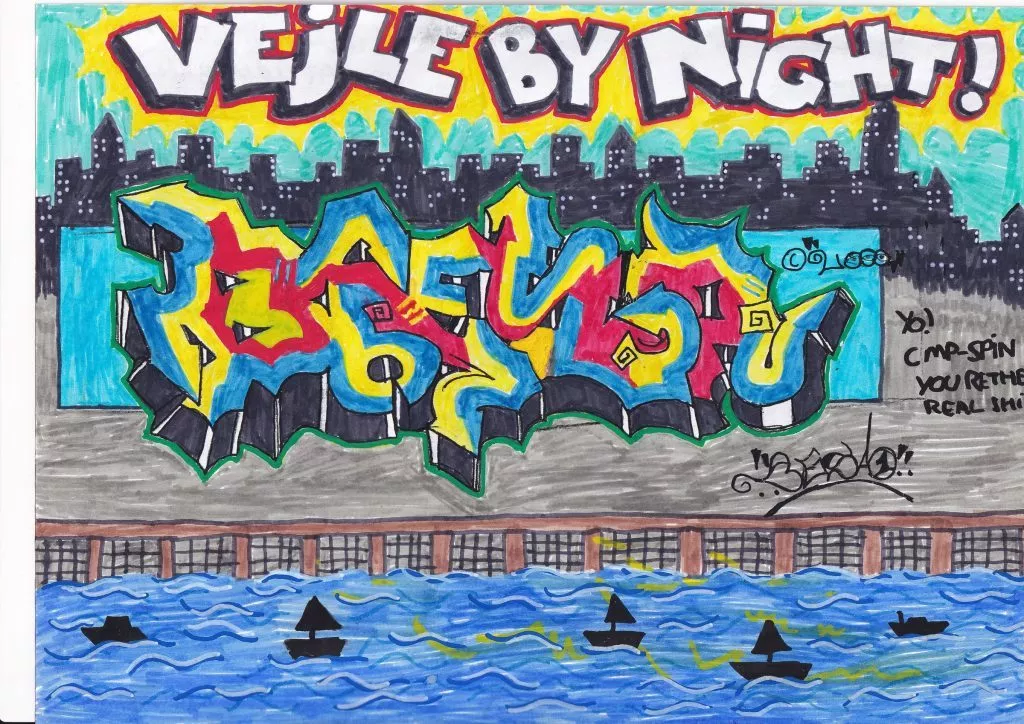
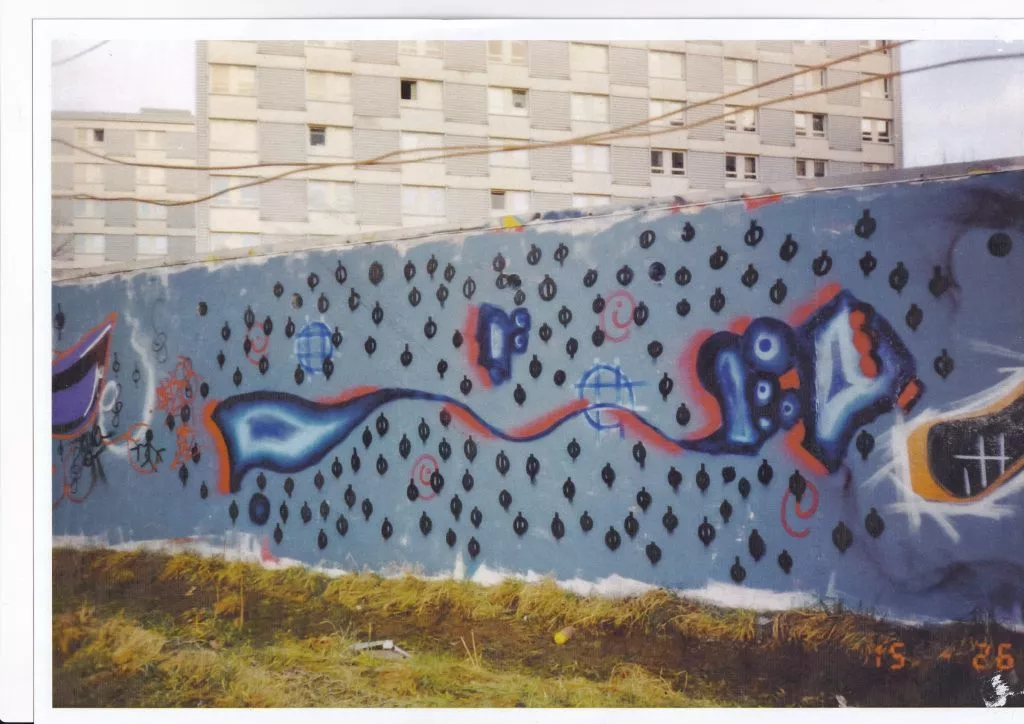
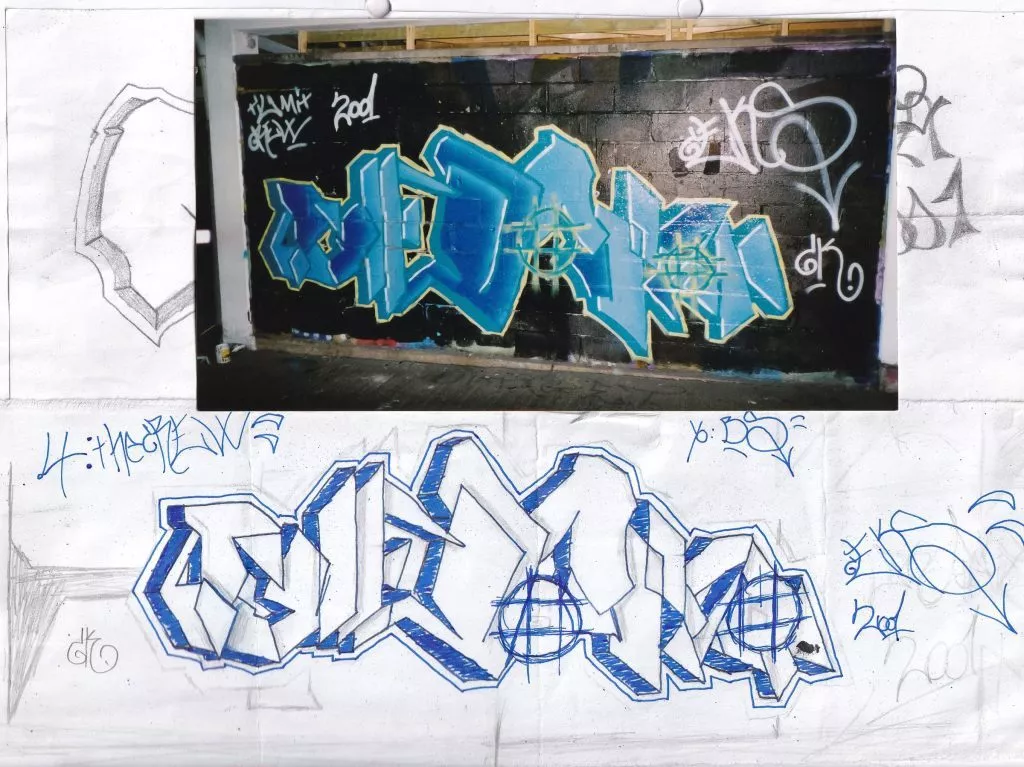
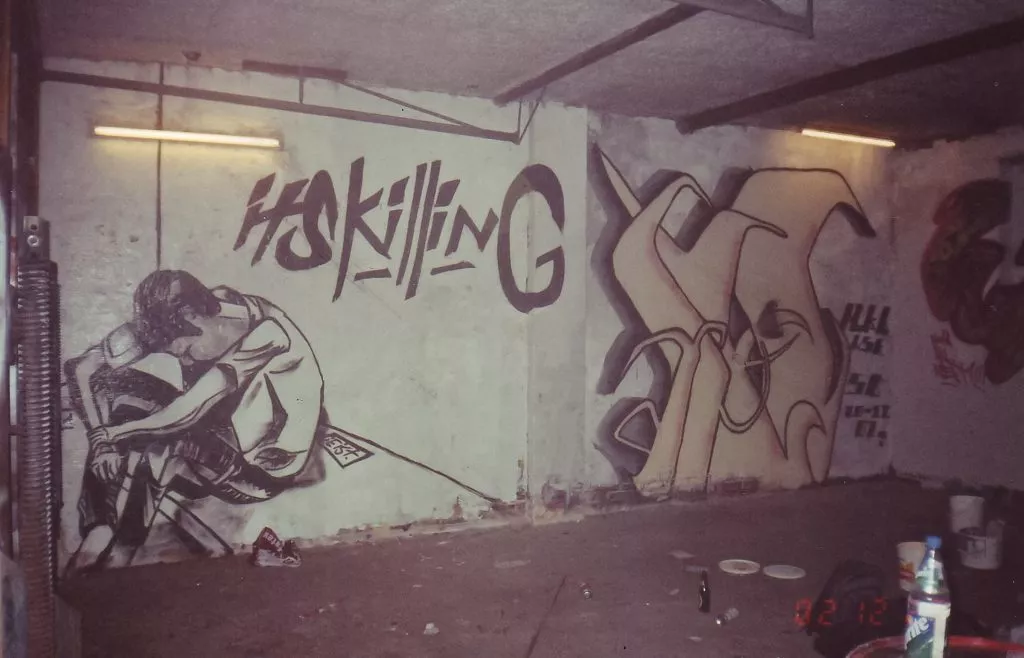
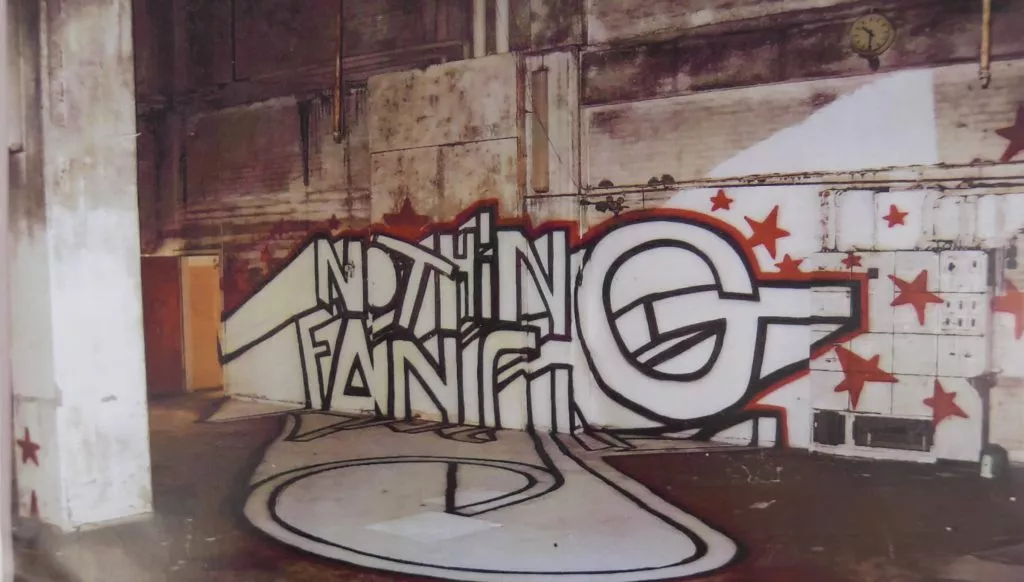
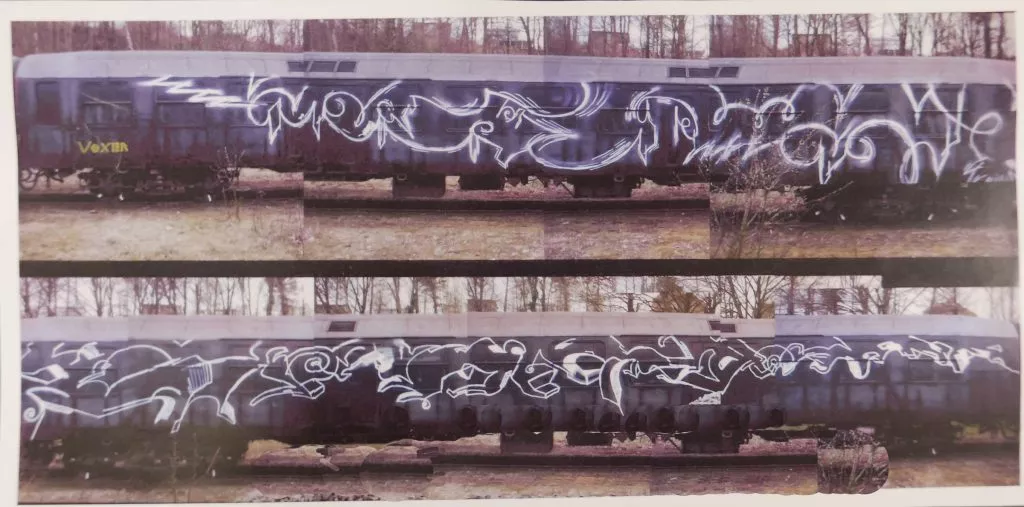
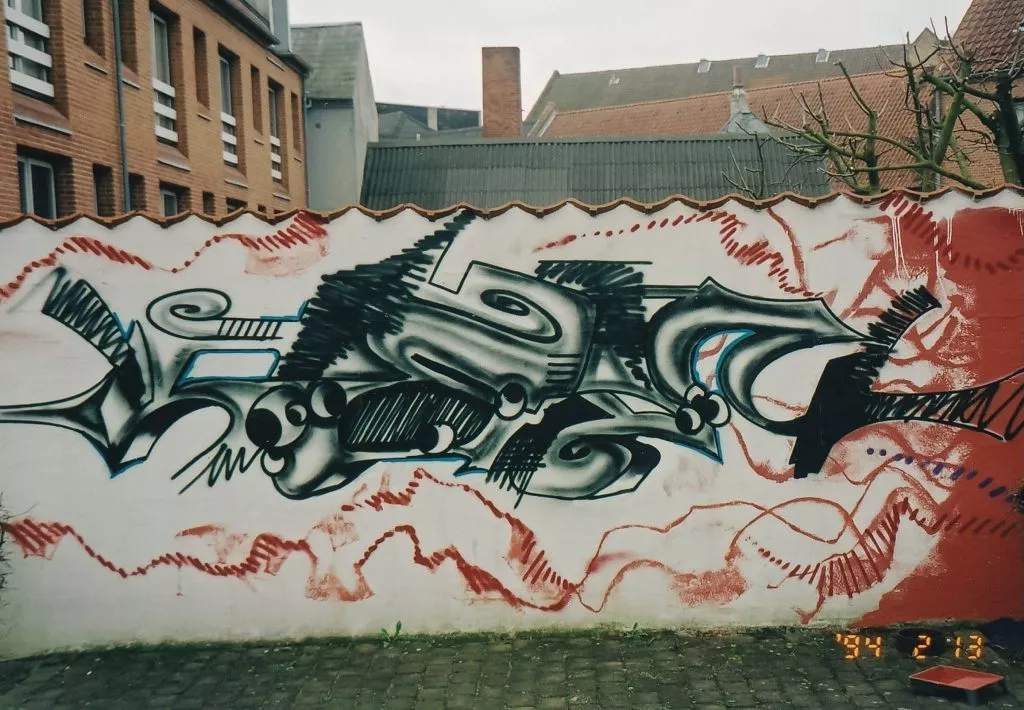
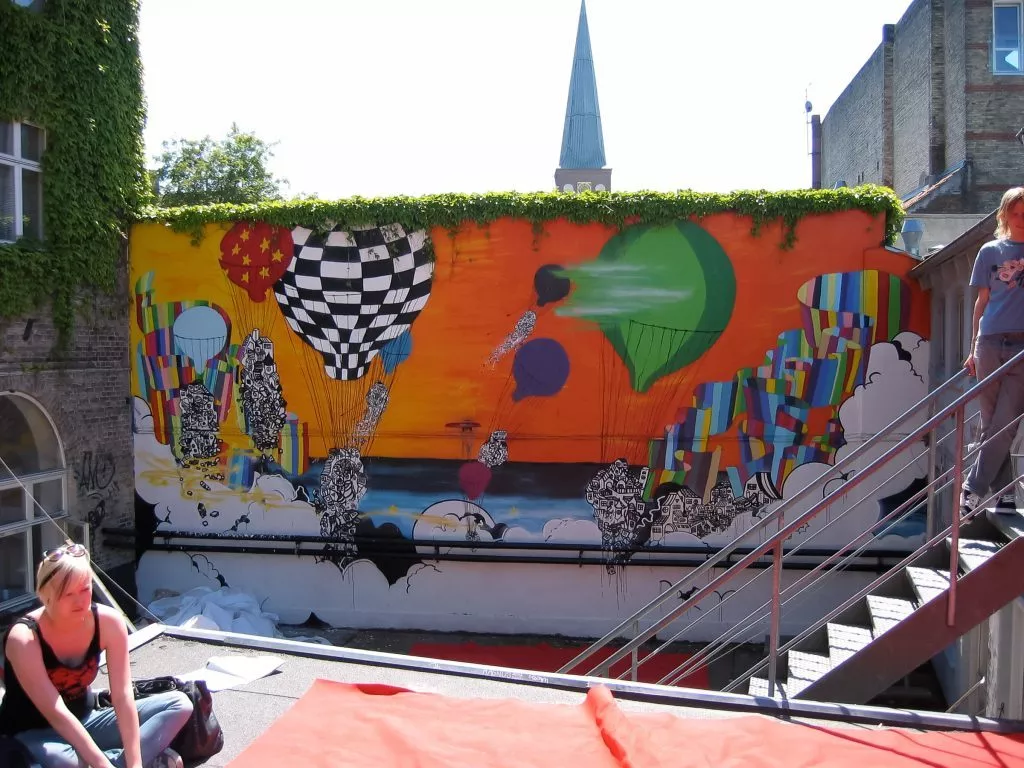
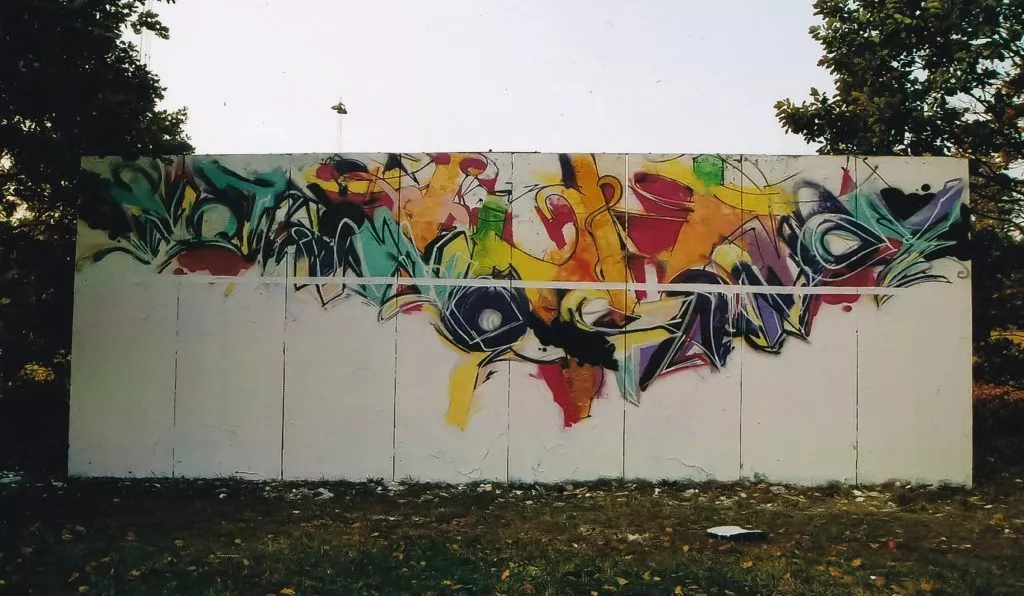
Art studies versus graffiti writing
After high school in 2000, Reventlov went to a production school, the Produktionsskolen Datariet in Vejle, and studied graphic design for one year when he was aged 17. Then he went to Vejle forskole for kunst og design from 2002 to 2003. After that, he attended Byhøjskolen Aarhus, Denmark, with courses in contemporary fine arts with the focus on preparing and applying for art academies. He attended this school for 6 months and finally got accepted after two tries to the Funen Academy of fine arts and the Jutland academy of fine arts. He chose to got to the Jutland academy in 2004 and studied there for five years to achieve a bachelor’s and a master’s in fine arts in 2009.
In particular, the studies at Byhøjskolen developed him as a human being, he says today. There he learned to express himself. But there he was told to stop graffiti writing and to grow up if he wanted to be taken seriously in the establishment of contemporary art. He was taught art history, art practice and gained context and knowledge. He was 20 years old and just wanted to fit in, but never felt like he fitted in anywhere in the art world. At the Academy, he learned critical thinking, how to analyze art, he developed his work in his studio and on walls. He tried to quit graffiti writing and focussed only on studio work, but it only lasted about six months. For many years, he decided to strictly separate his outdoor work on walls and his indoor practice.
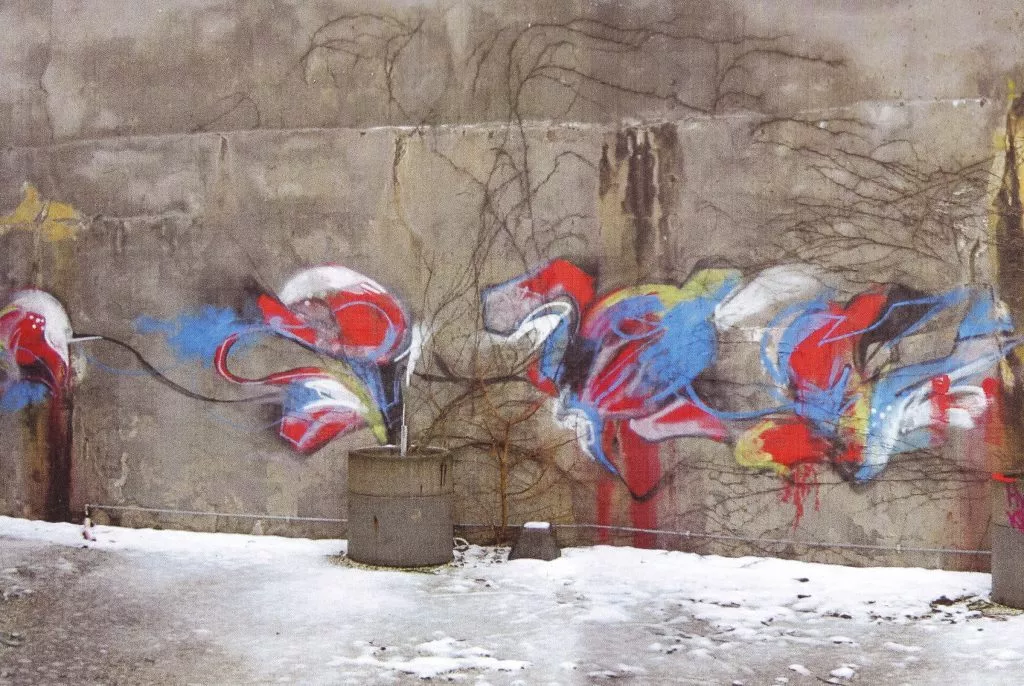
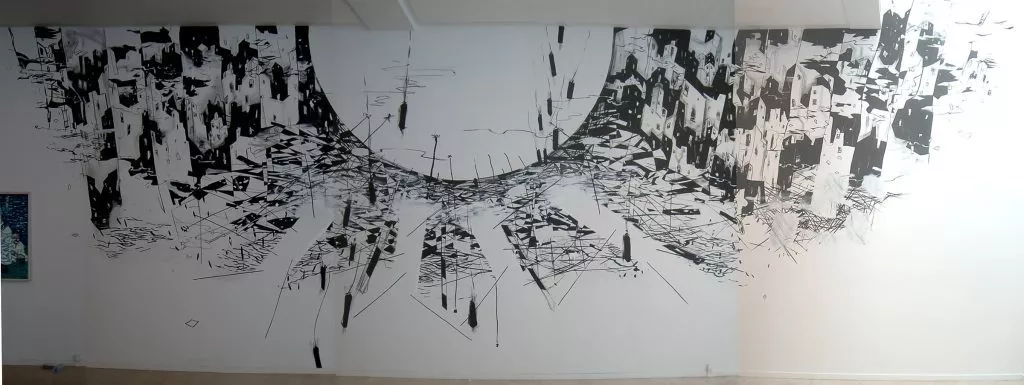
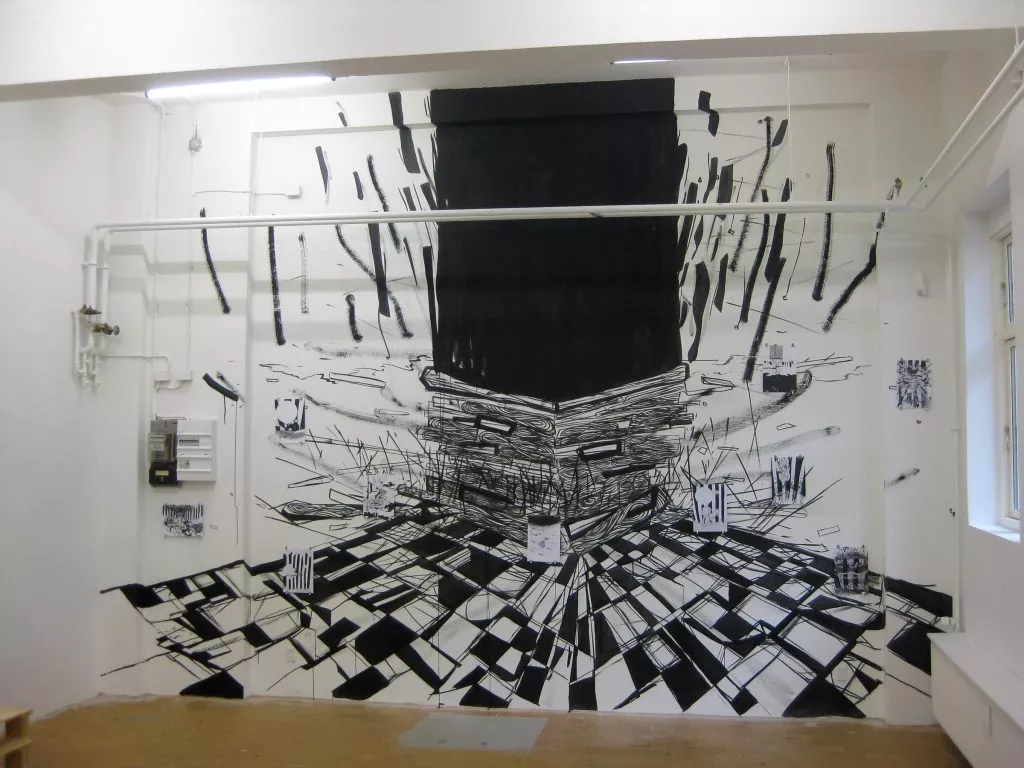
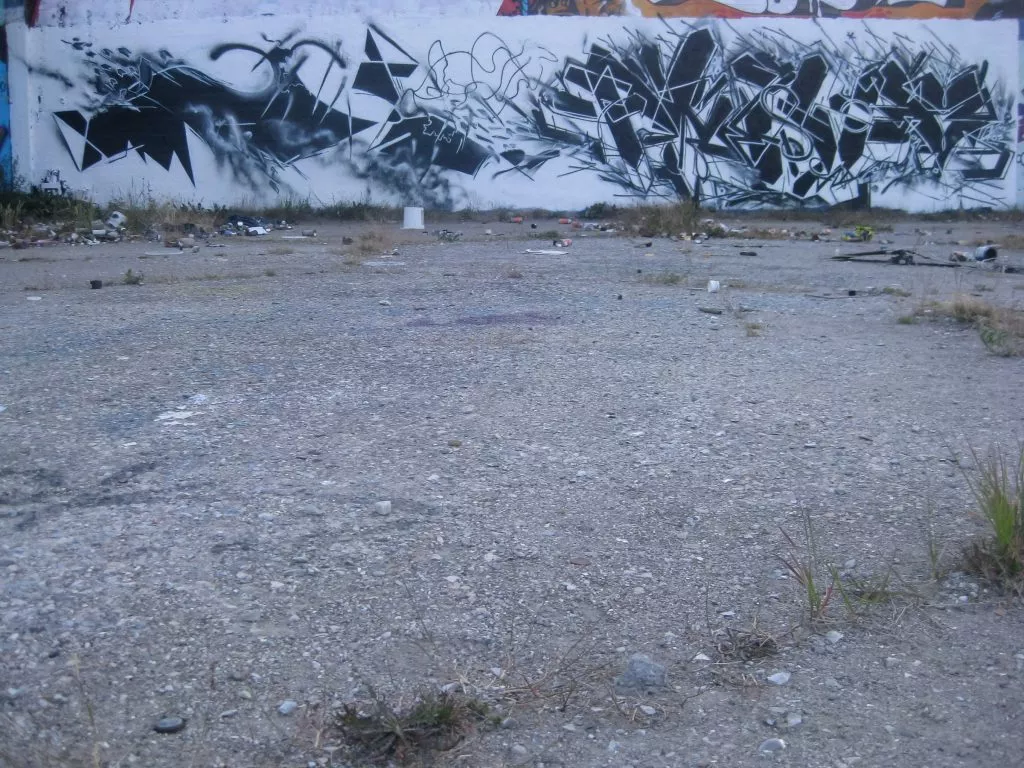
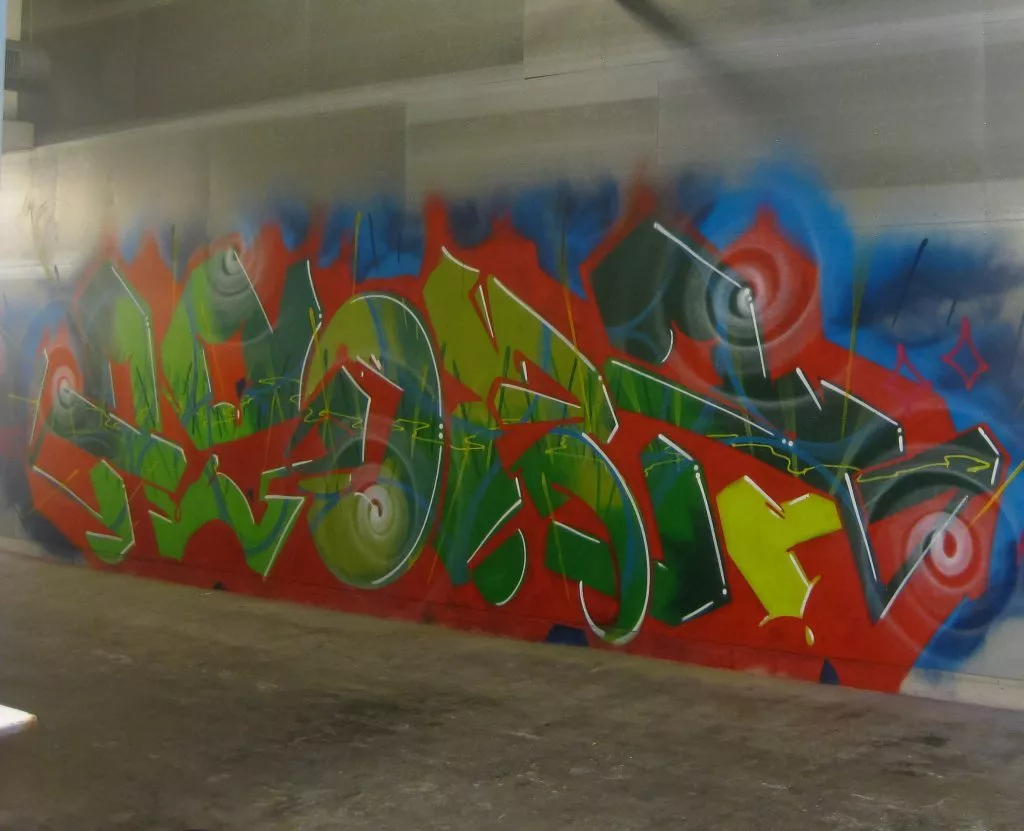
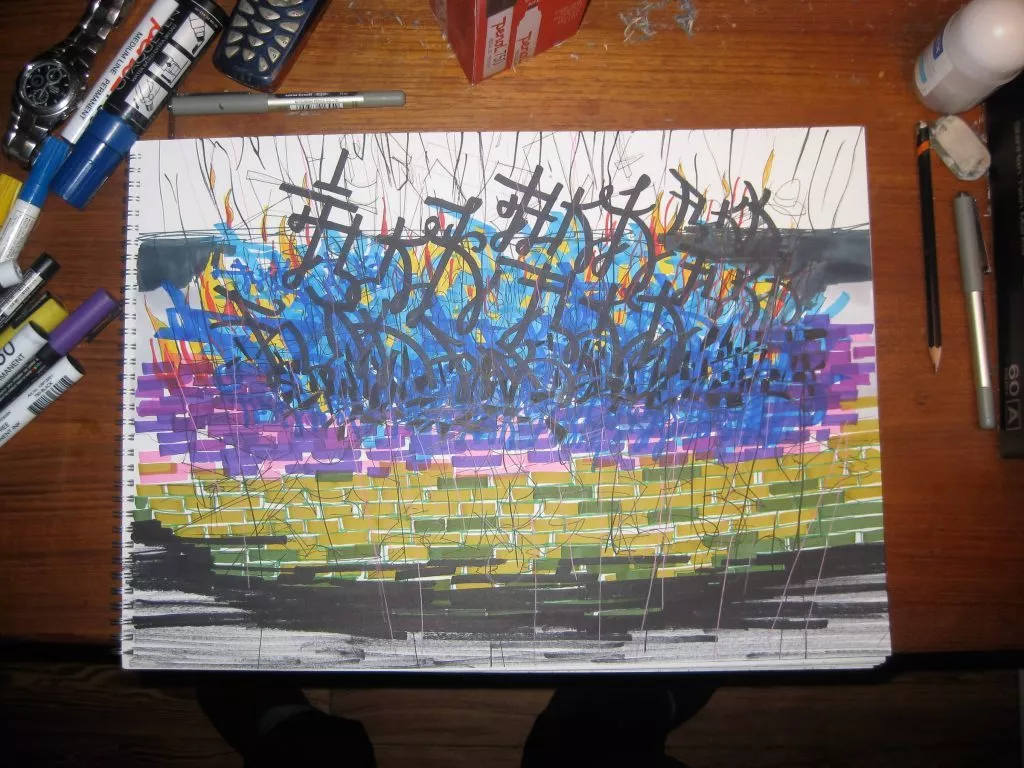
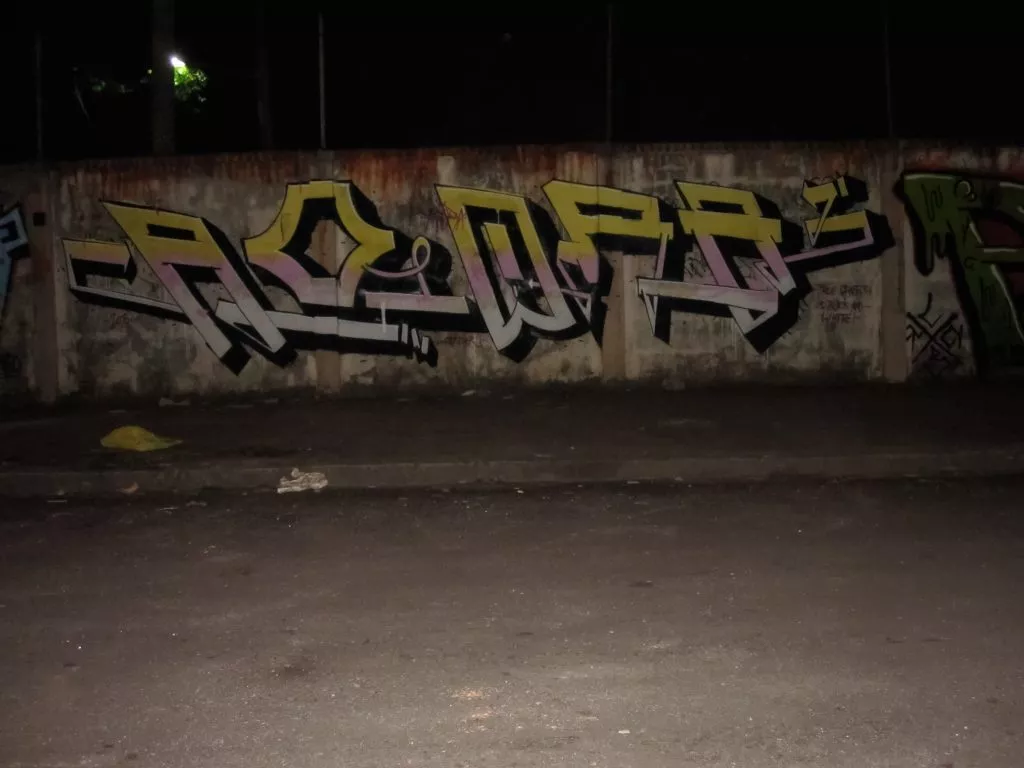
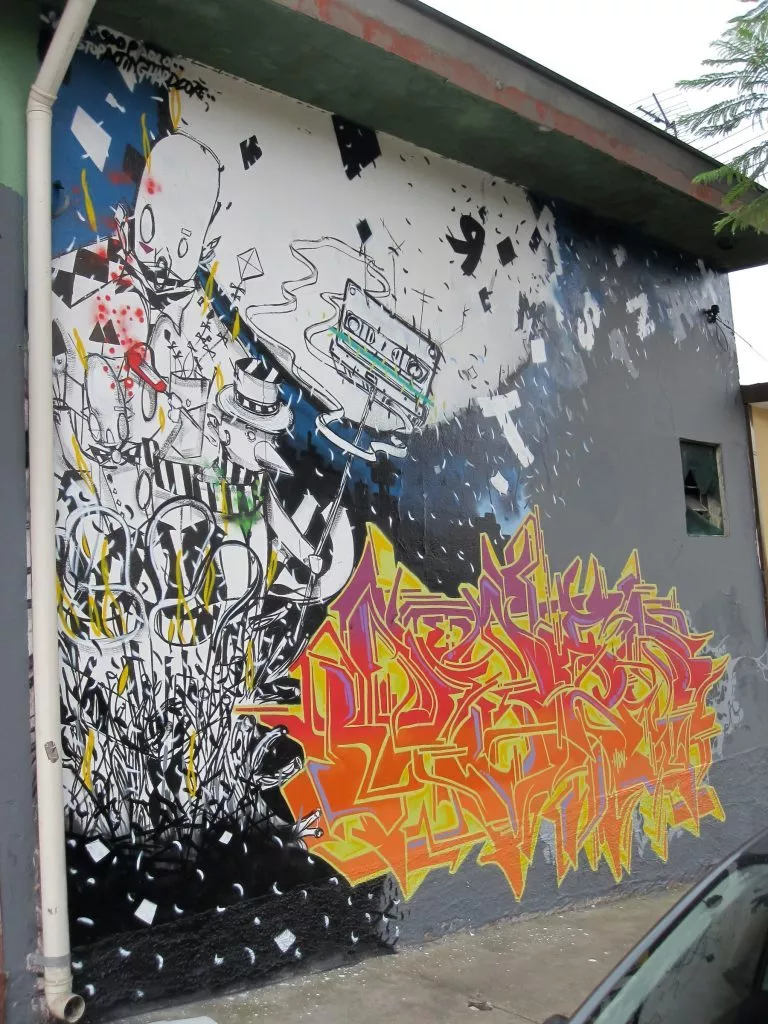
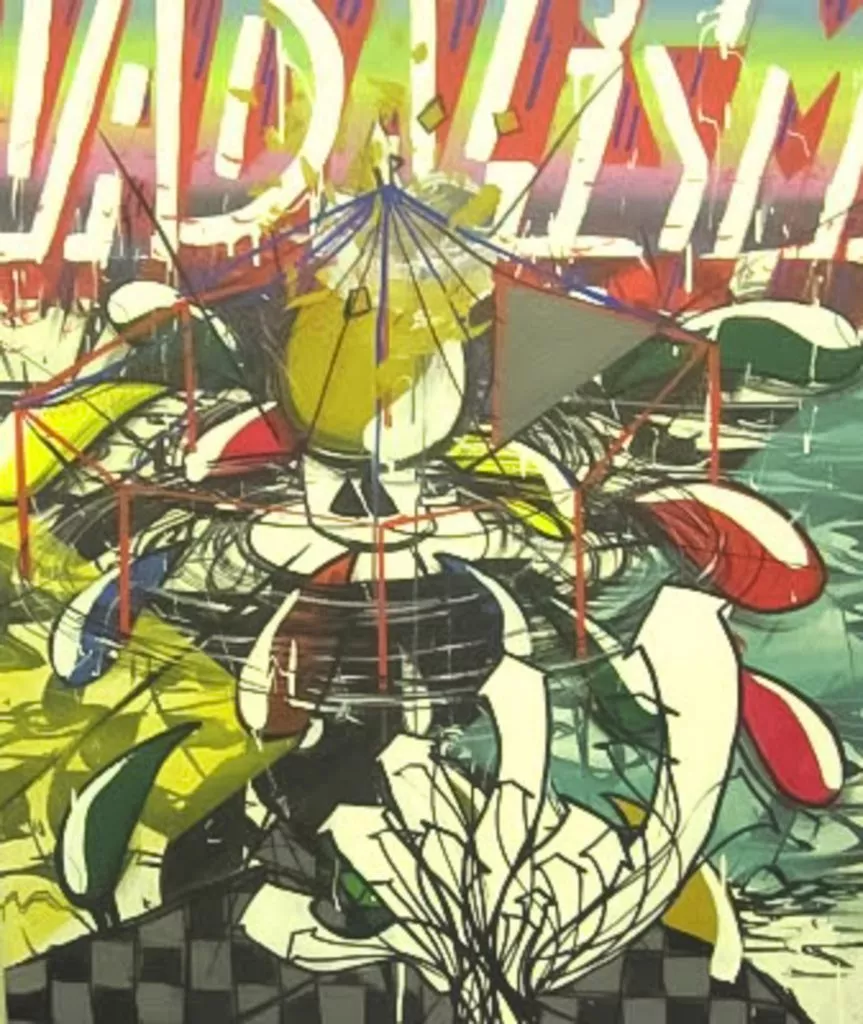
Developing different art practices
Around 2000, outdoors, Reventlov started to paint abstract graffiti pieces on walls and freights. He was very paranoiac about being busted at the time and tried to figure out a way of camouflaging his graffiti pieces, so he came up with the idea of just painting abstracted shapes, unreadable, unrecognizable letters. Creating different works in the studio, he started signing Anders Reventlov in 2014 (on the back of canvas work and drawings), when he started showing studio works in galleries. Beside developing of own techniques and artworks outdoors and indoors during those years, Reventlov worked as well in a duo, together with Danish Artist Lars Hempler, under the name FLUXCAPACITOR SYDROME PROJECT. For 12 years, from 2007 till 2018, they created multimedia works together with the topics, urban dystopia, human decay and the self-destructive nature of human being in form of site specific installations with fluorescent lights and sound.
Experimenting different forms and methods for many years, he was introduced in 2008 to the use of Indian ink on big paper formats through CMP One, a technique he still uses today. After a lot of experimentation and thoughts about his drawing and writing practice, he started to use only black on white/white on black in a more consistent way because it had a direct reference to writing. In the beginning, he also used yellow or one other colour sometimes. The main reason of this colour restriction was because it set him free for composing. Like this, there is no possibility of hiding because it is about the lines, the motive, and it has to be perfectly balanced, the artist explains today. It holds a particular energy, the spontaneous vivacity and spirit of drawing. The basic idea behind is that drawing is writing and writing is drawing. For the artist, the act of writing is a unique creation for each single letter that is written and a particular gesture, a calligraphic expression, that requires a lot of practice. Concerning graffiti writing, he thinks all disciplines as tools fit different occasions. Sometimes it seems to be the right thing to do a tag and sometimes the spot is for a throw up or a piece, whatever fits the occasion, says Reventlov. And it is very important to have an own unique tag and hand-style, tagging is the most interesting and important aspect of writing. He really likes throw ups as well, and thinks a good throw up can burn more than a 100-coloured piece on a train or a wall.
Today Reventlov still likes to paint outdoors, especially in abandoned buildings, also in winter time, because then he has to paint even faster. He used to use colours and do layers, using roller paint, and building it up. Today he is mainly using spray paint with only one colour. He doesn’t sketch at first and the first line is the line. It is the only try that stays on the wall, like a tag, he describes. Freestyle is very important and in fact, it is his work as it is now, and has been for a very long time. Today, many of the movements of his lines are based on the shapes and letters of the word agora, looking for a balance between round and square shapes. To find new shapes, he zooms in his own drawings or other images, sometimes to find a nice gesture, a good stroke, a texture or something he could use.
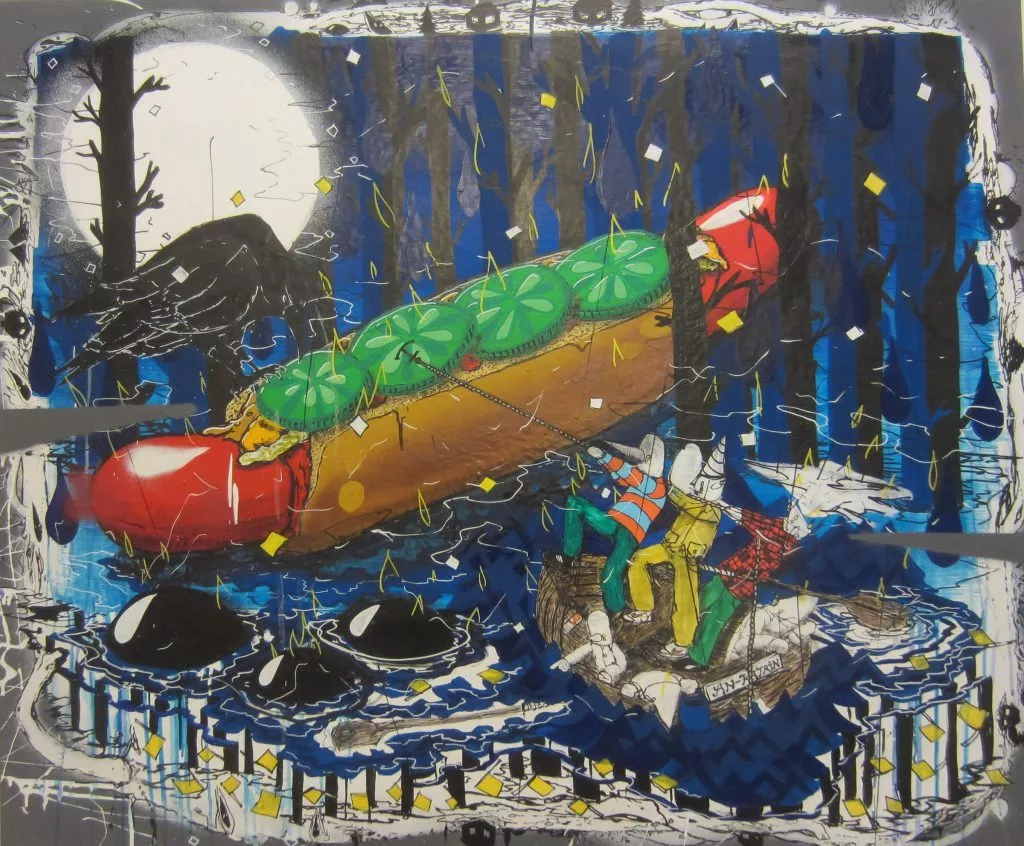
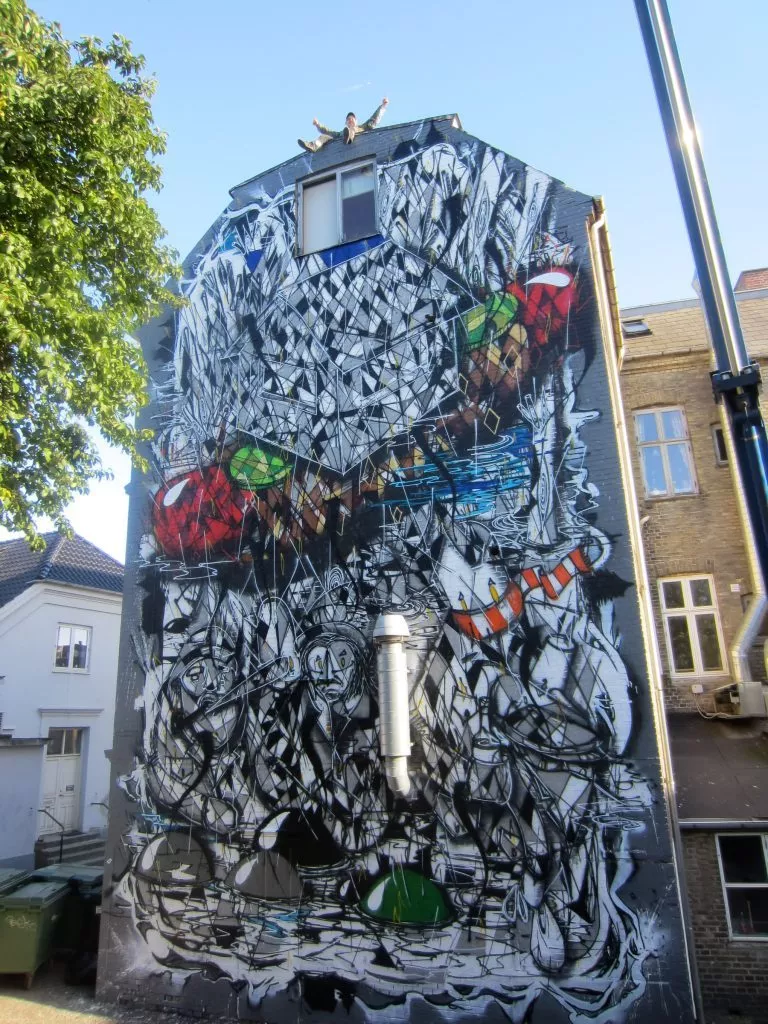
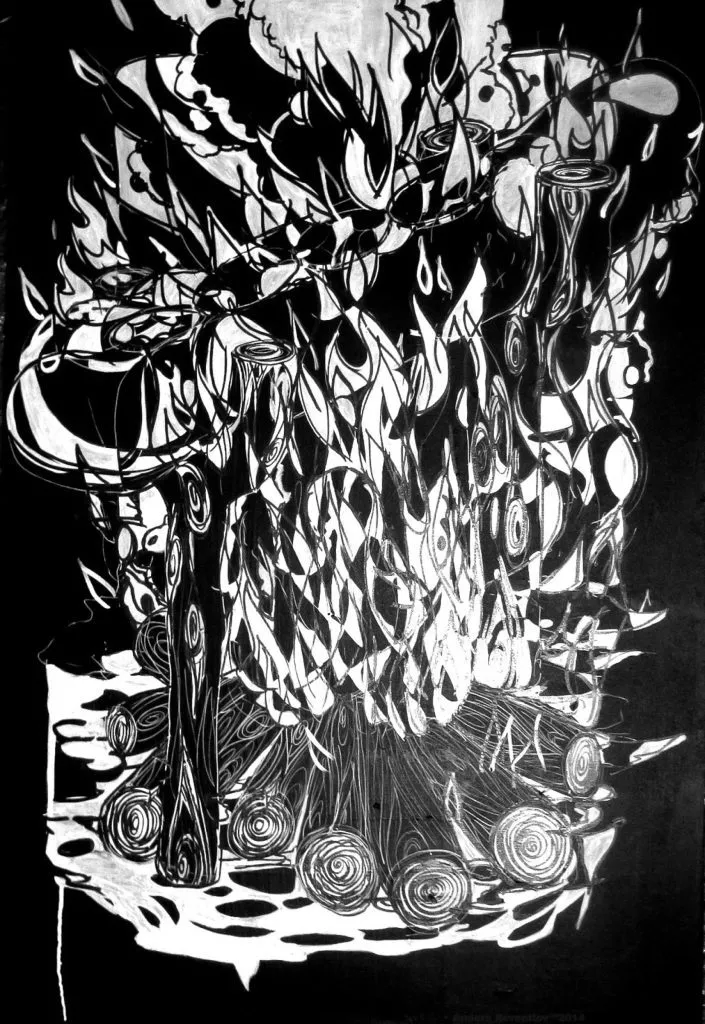
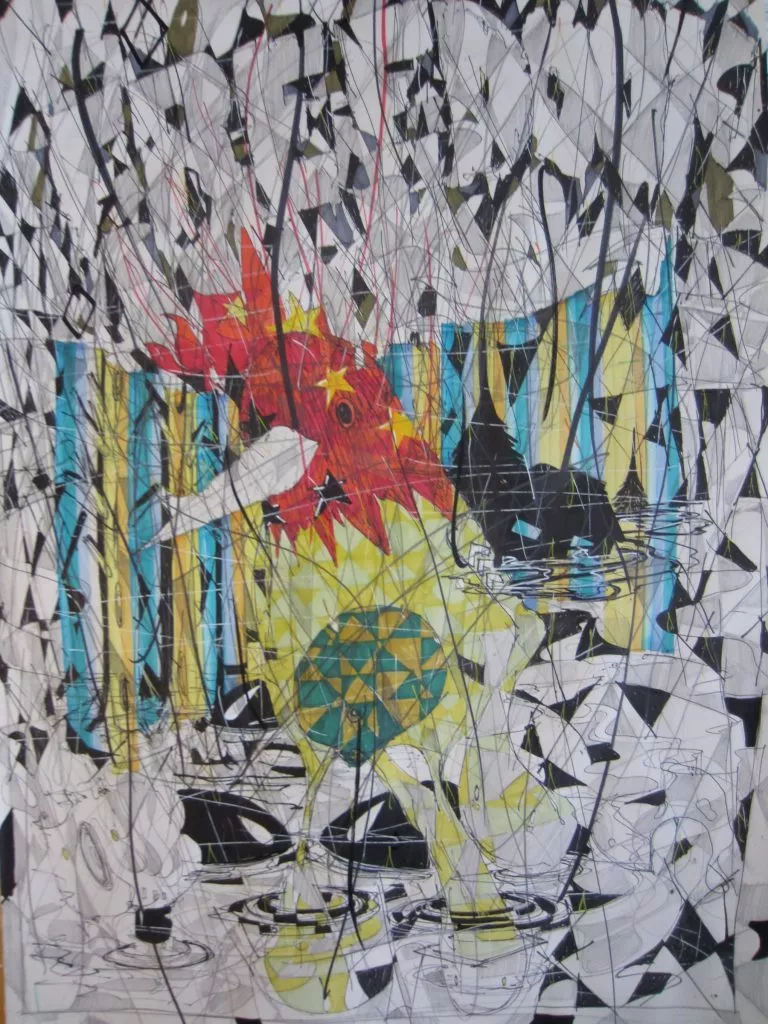
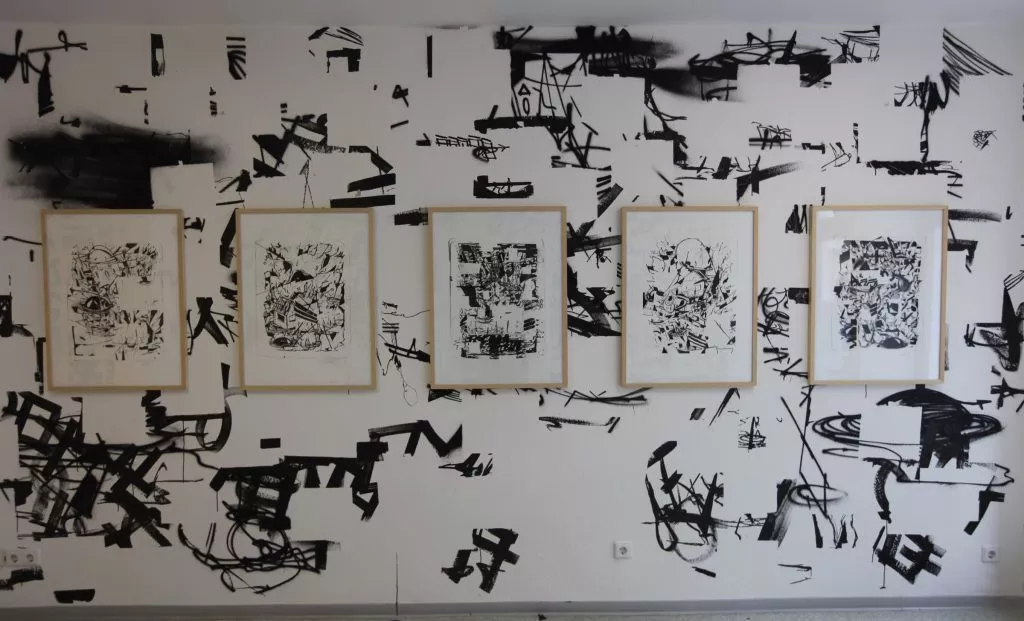
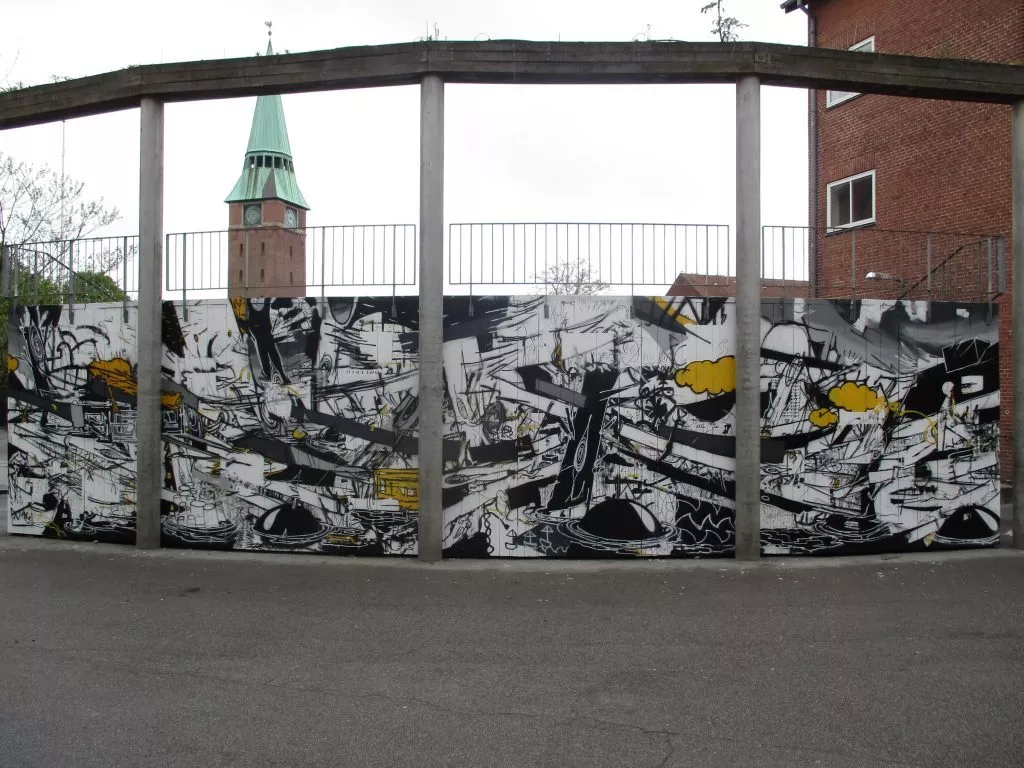


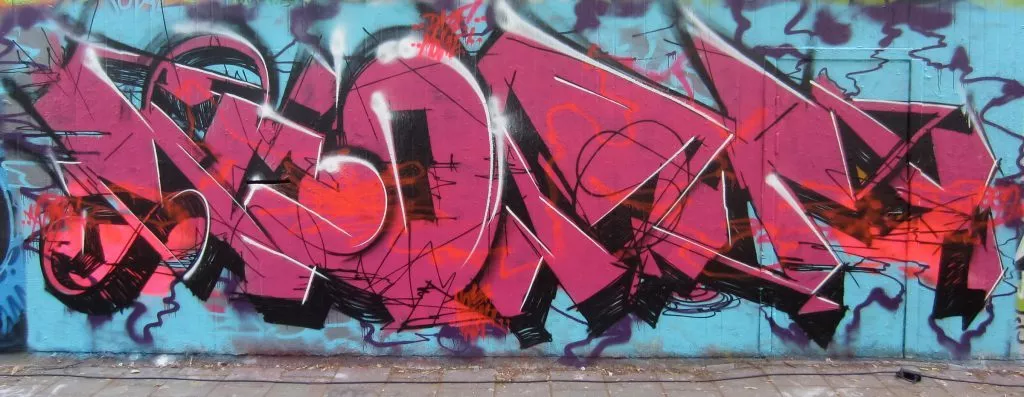
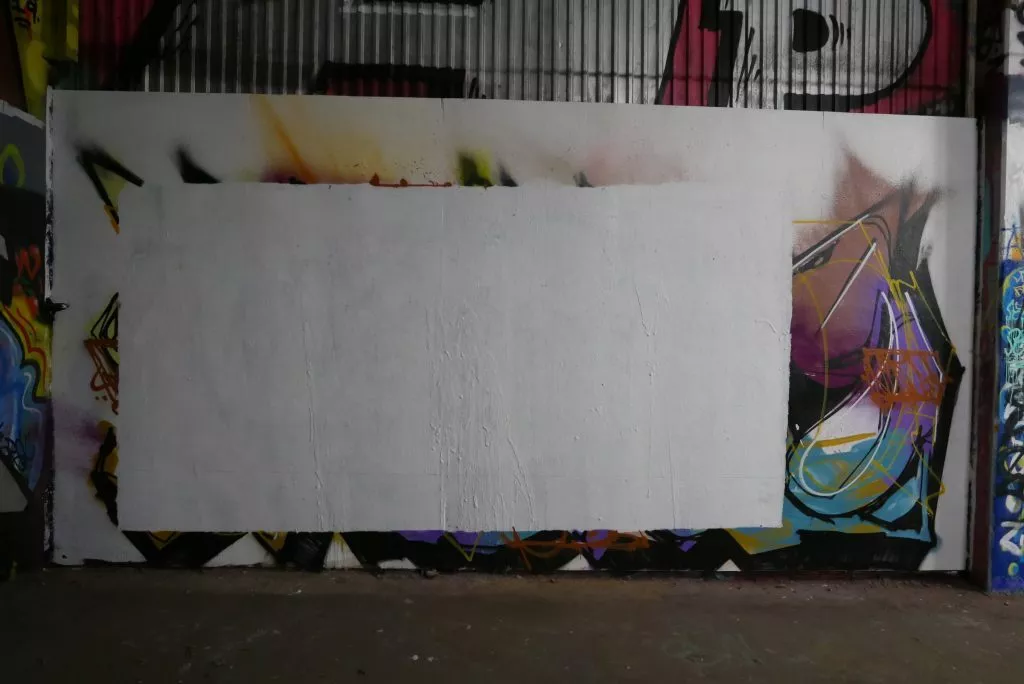
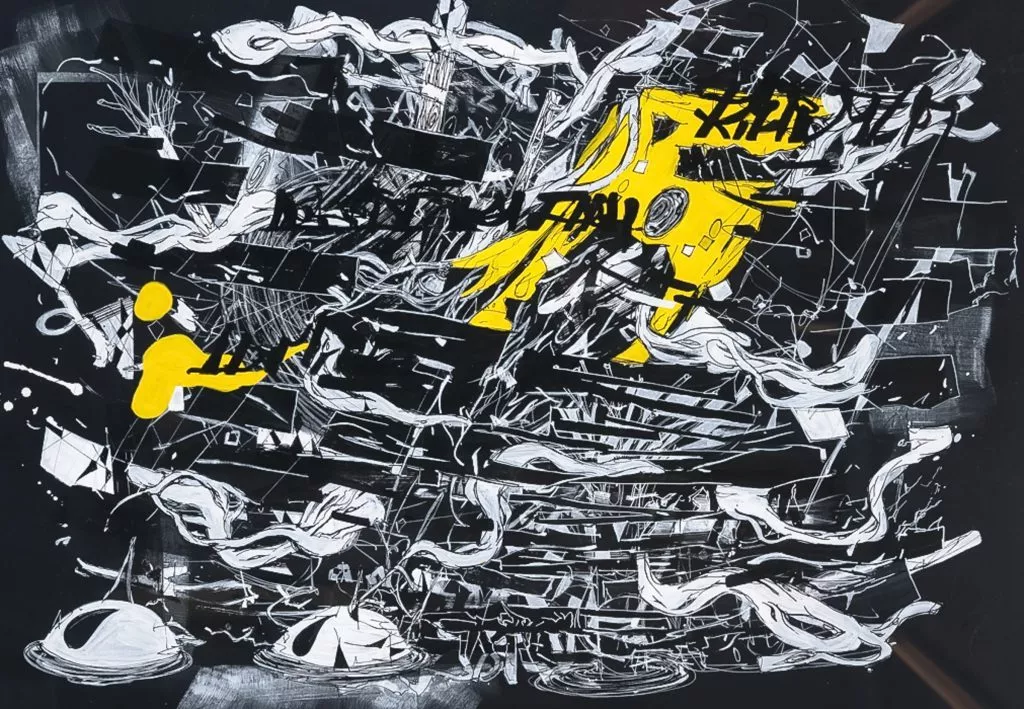
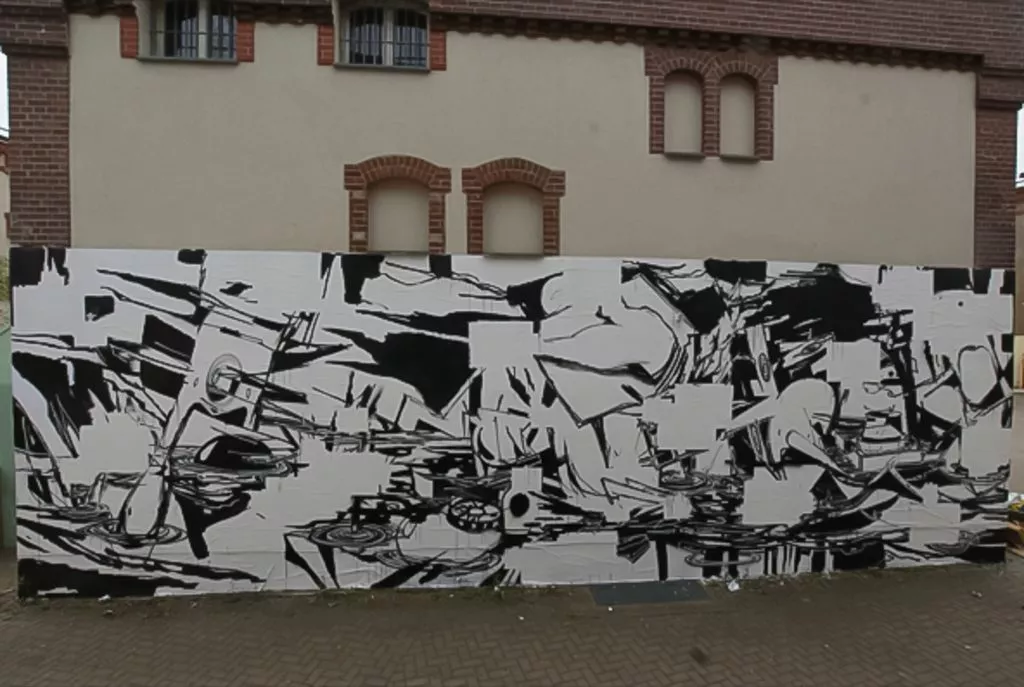

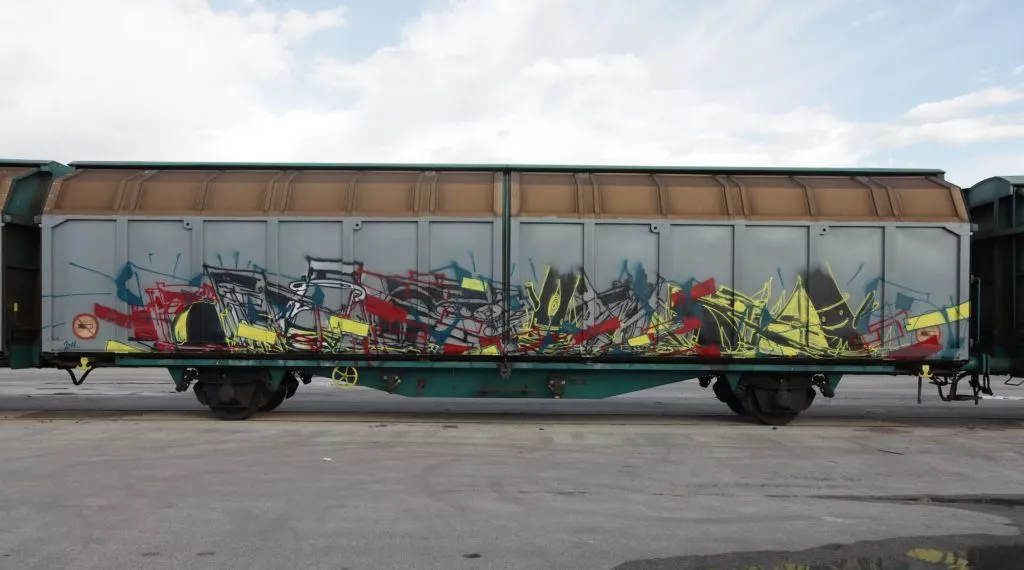
Series „Traces of action“ and recent works
Over the years, Anders Reventlov developed his visual language from semi-figurative drawings towards a fragmentation of figurative motifs into an abstracted expression. He came up with the idea that for him writing is drawing and drawing is writing. Since 2014, he has worked with the juxtaposition of writing and drawing for his outdoor works, putting aside characters and where painting becomes an action. Including his black and white drawings on paper from the studio as fragments sticked to the wall for starting a wall painting composition from the lines of those drawings, he developed this original method on walls called “Traces of action”. There he combines two practices perfectly in an original way, creating dynamic written/drawn wall paintings, expressing the power of handwriting and automatic script. Removing the drawings at the end, small blank rectangular spaces of the paper formats remain and become part of the final composition. Those drawings, over 1000 today, provided with new traces of paint by the wall painting actions, are later used again for new compositions on walls or kept as single drawings for indoor installations.
For the Danish artist, drawing and writing in our development as human beings are equated with being individuals. With it, you can feel that you can express something, you can act and you can communicate. According to him, with the digitalization of our societies, handwriting and writing and experiencing one’s own unique handwriting as an expression is a threatened human practice. The problem will be the following: If the writing disappears, whether it is the automatic script, the fiction or everyday writing, then in the long run, this art form will have cramped conditions and the free action of it will maybe slowly disappear.
After a difficult time around 2019/2020, being exhausted from working so much in different fields, the Danish artist had to rethink his life and his own art practice. He reflected on what really was doing him good in order to be able to continue art and started sketching every day. He decided to embrace the letters in his art practice again, after suppressing them for a long time, not hiding his graffiti reference any more. It was more about the idea of letters, the energy of them, letters as the medium for expression. Those ideas had been seething inside him for a long time and wanted to be set free and came out in his works of the last years, combining his first art practices in his life: doodle drawing and graffiti writing. With this art practice, he will continue to work with writing as a form of expression, he says, but not as written words, but as abstracted shapes created during the action of painting. At the end, it is about the essence and the final composition, the balanced composition between black and white surfaces and the shapes and lines resulting. And Reventlov creates balanced images full of energetic movement, expressive traces of action, performed as an automatic script/drawing containing the essential individual energy of the artist’s hand.
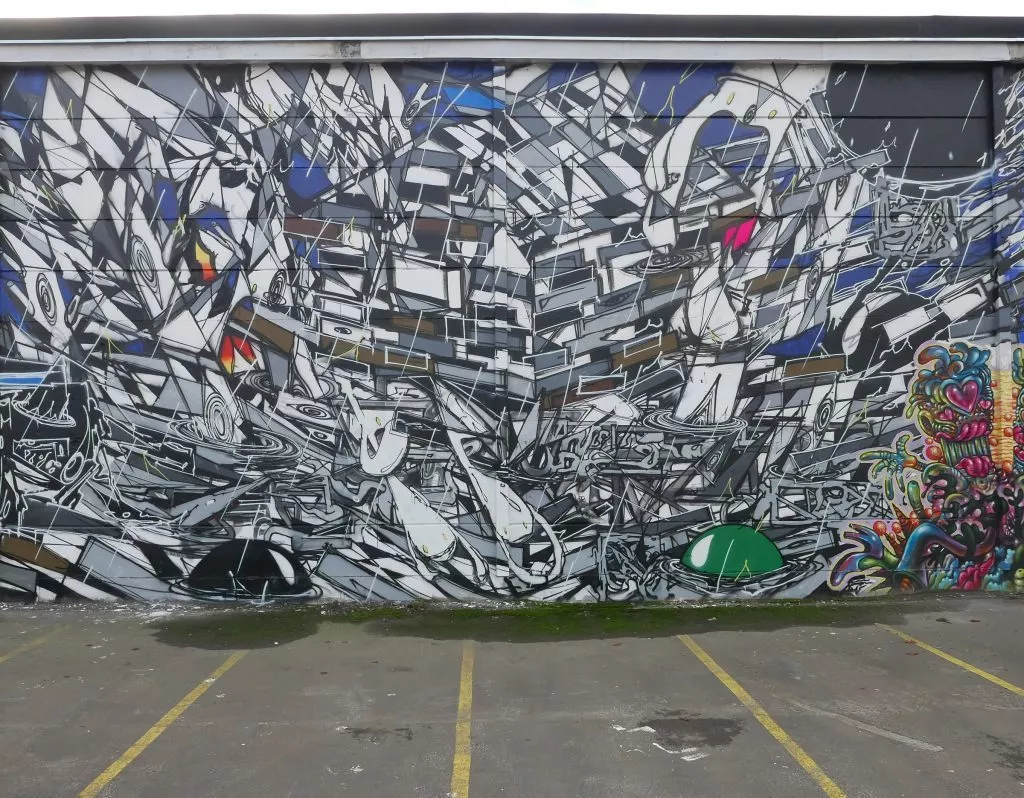
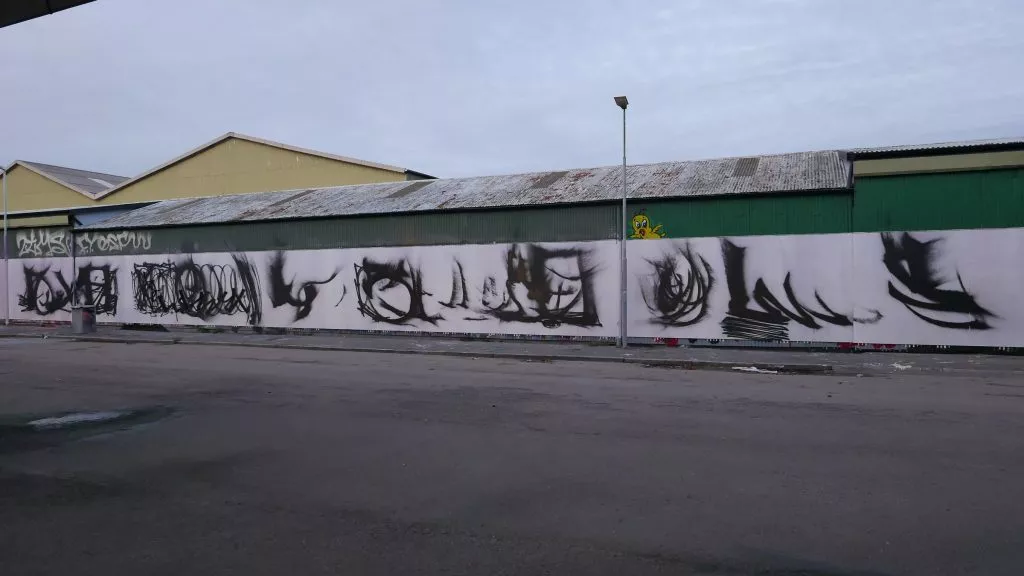
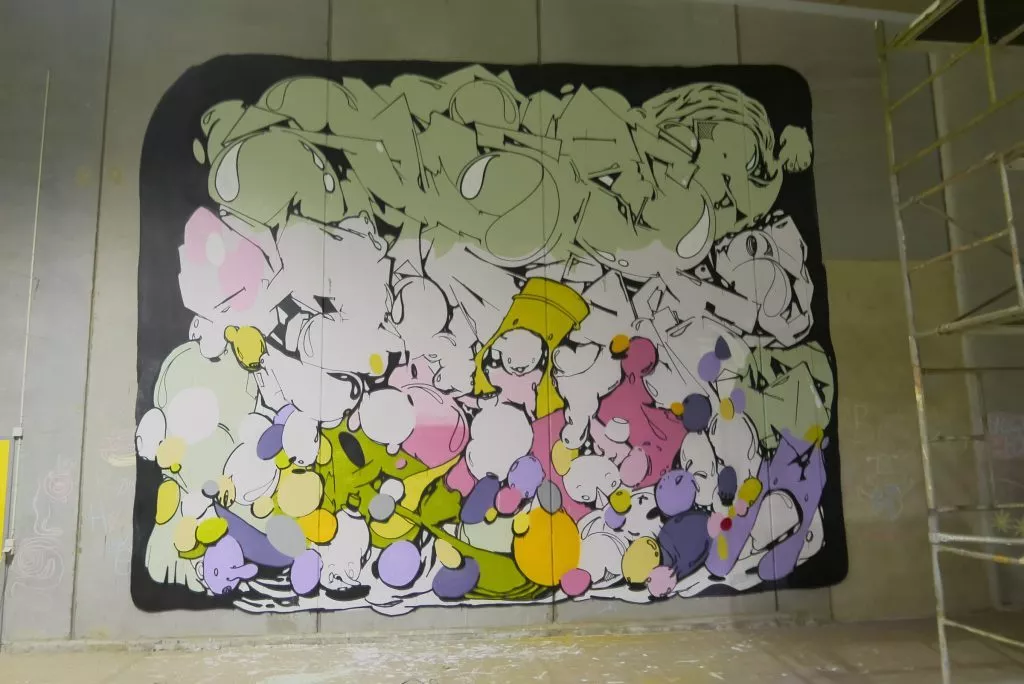
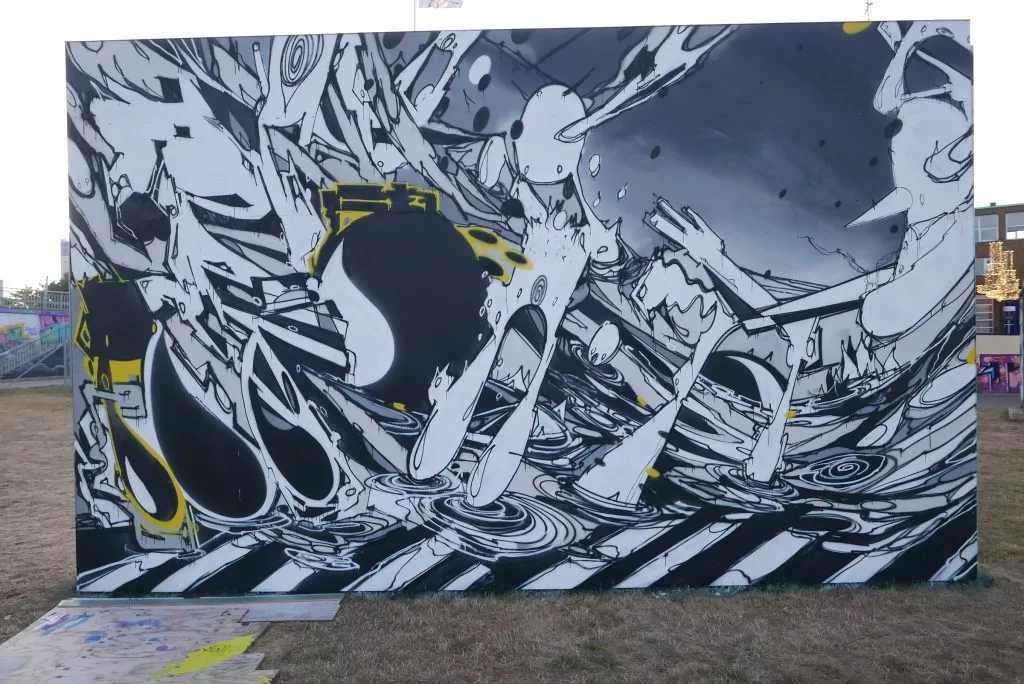
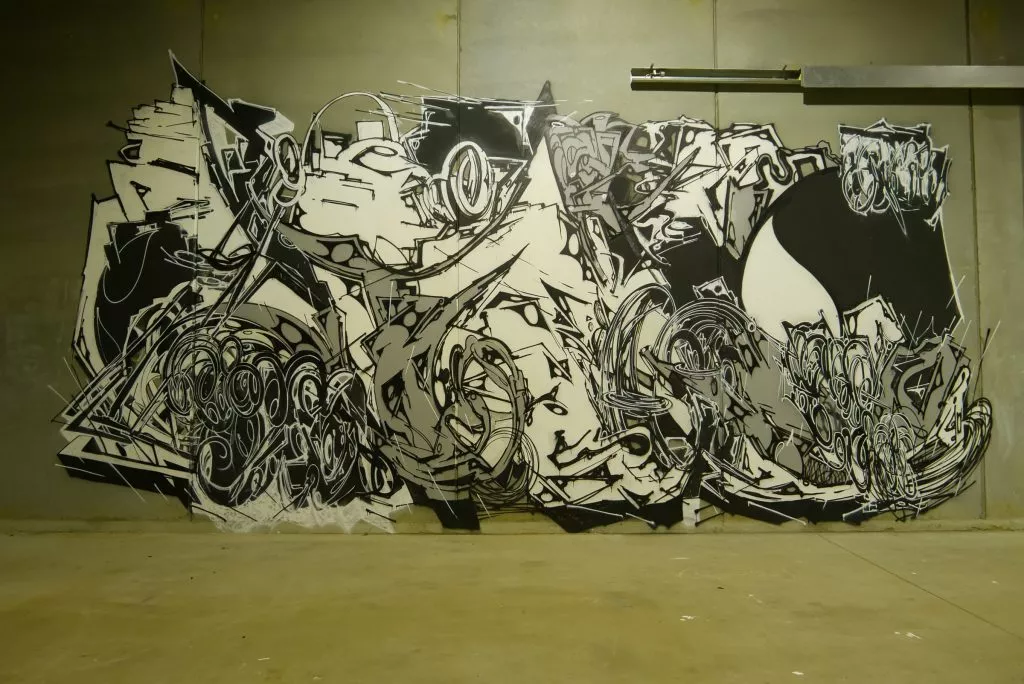
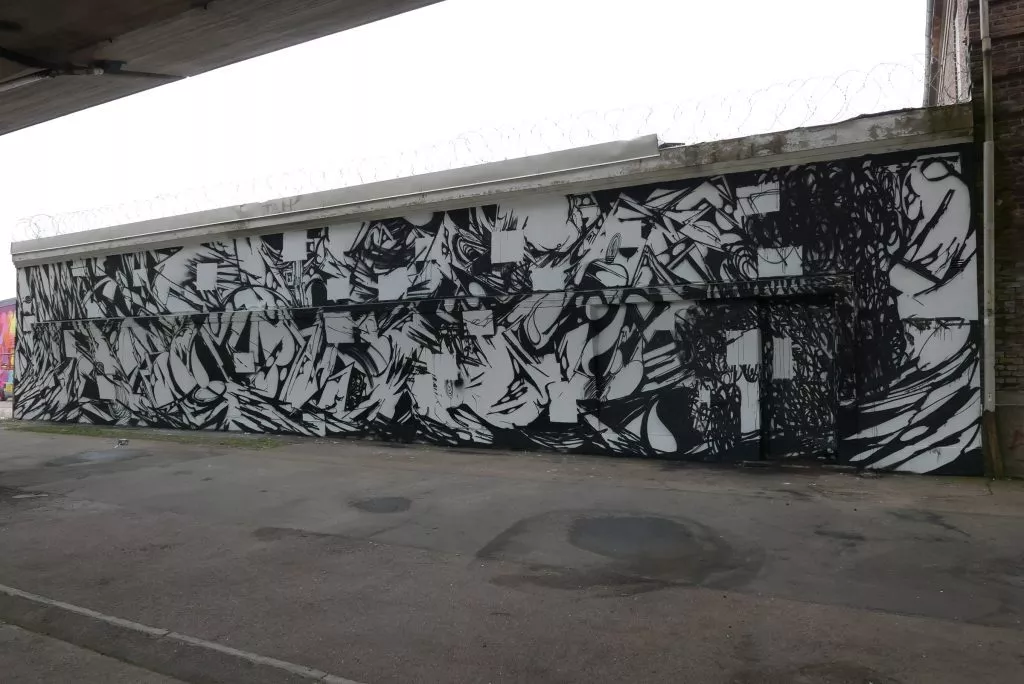
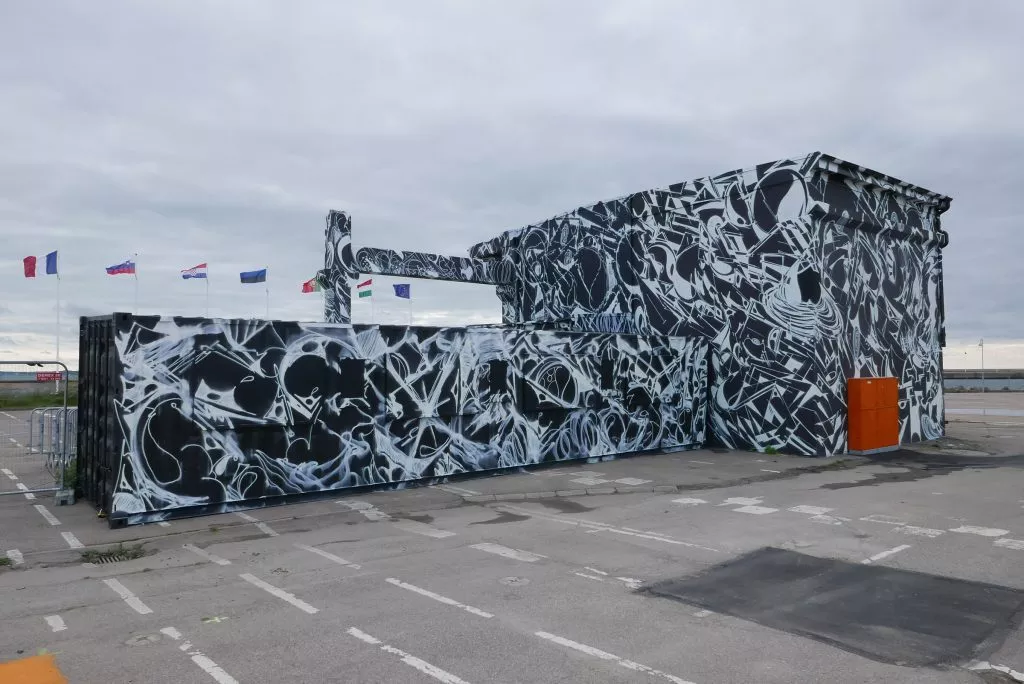
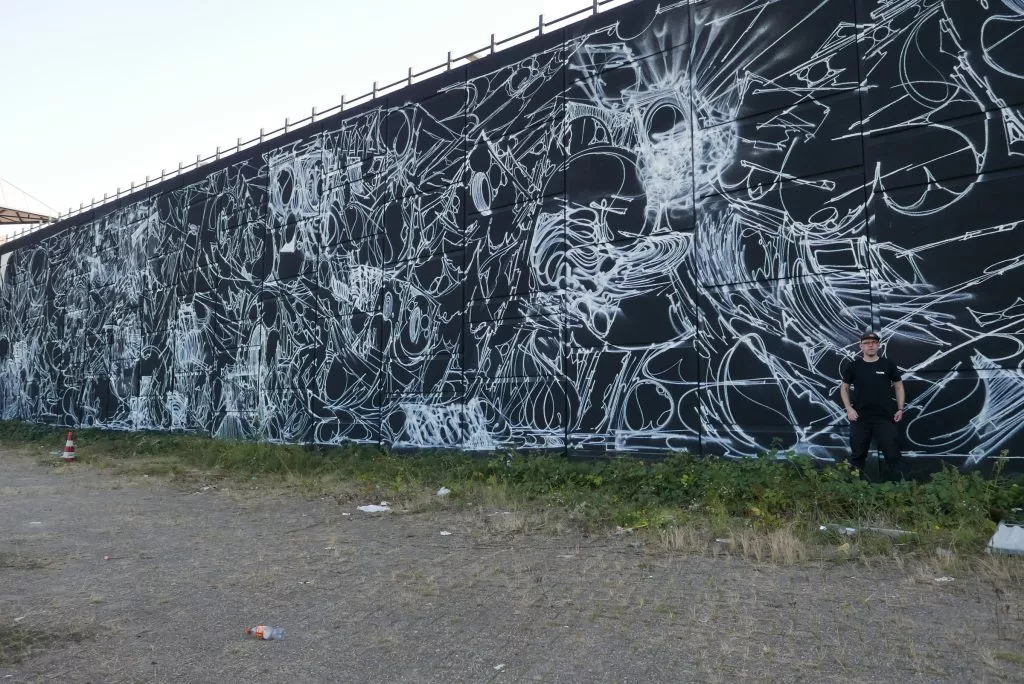
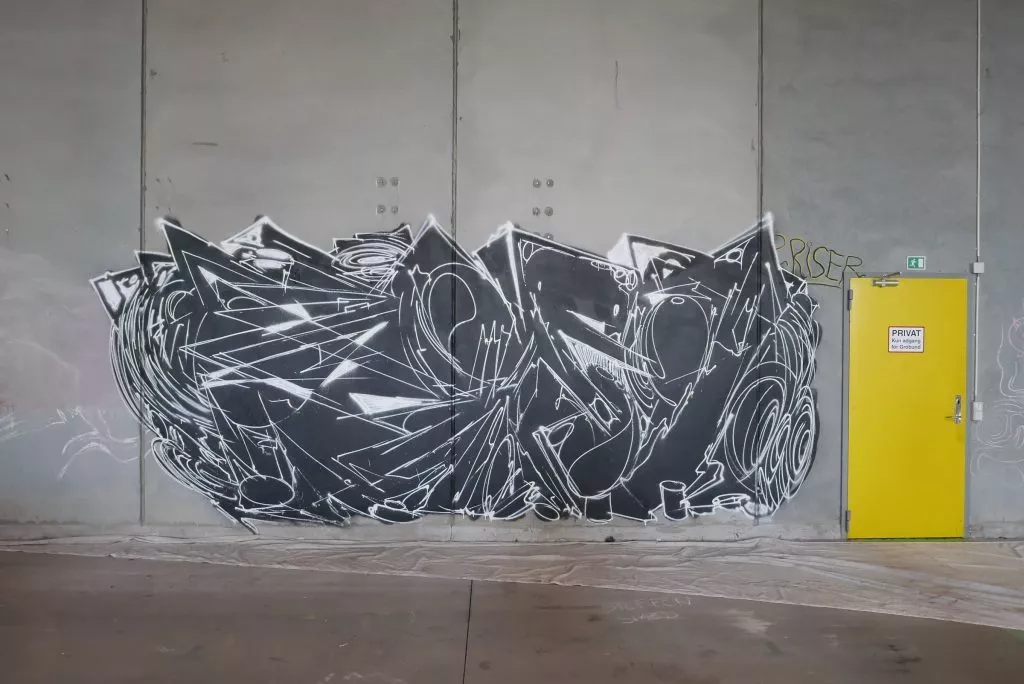
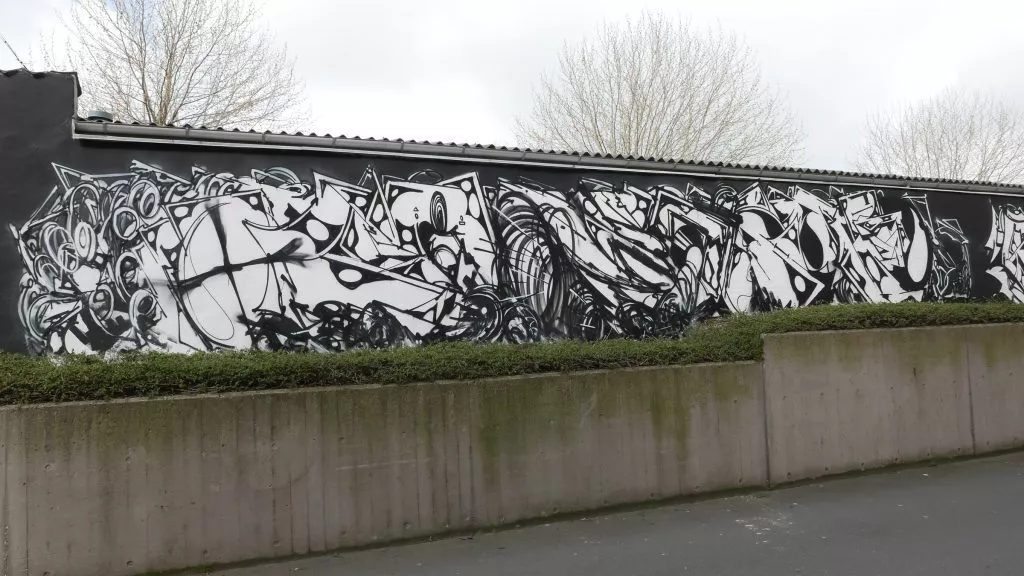
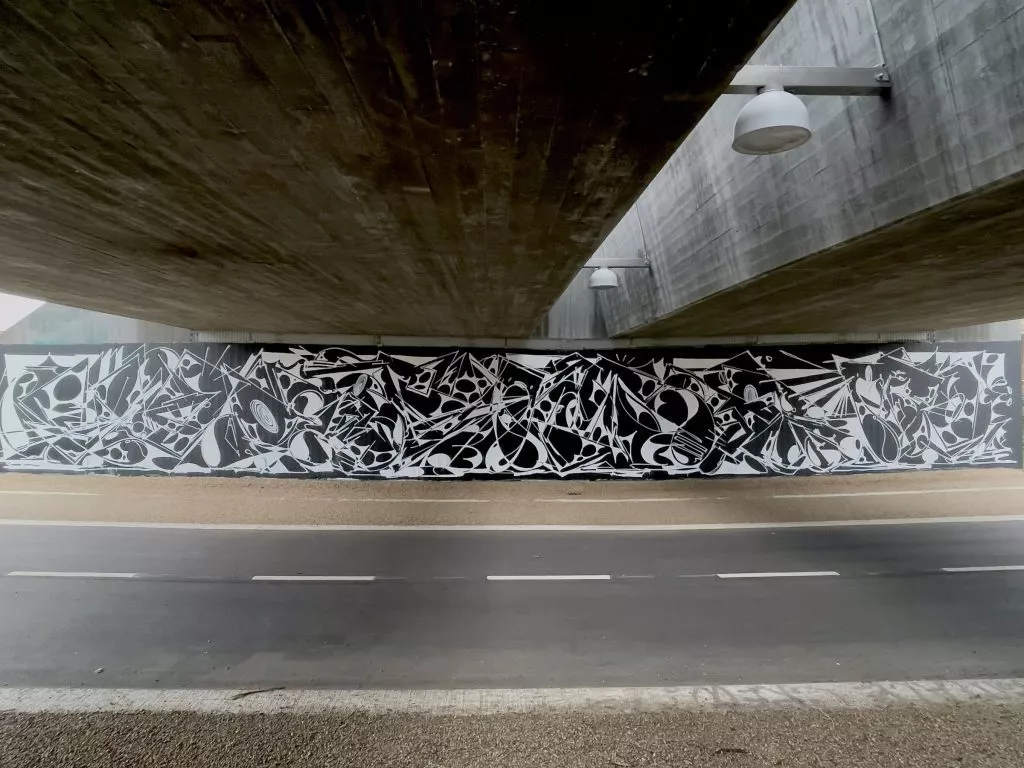
Involved in the graffiti writing culture through other activities
Besides his art practice, Reventlov ran a gallery space called Artboks in Aarhus rom 2004 to 2009, together with Lars Hempler and Jimmi Holstebro and showed many different artists, like CMPone in 2008. Curating many exhibitions with writers, post graffiti and contemporary artists for different art spaces and festivals since then, also for Tegn:Artspace from 2016 to 2018, Reventlov is an experienced curator doing important work to support this culture in Denmark and abroad. He has also been working as a teacher for years. He taught fine arts from 2015 until 2019 at Jyderup, Folk High School, was a guest teacher at the Aarhus Kunst akademi and worked for the Swedish School called Urban Kunst(Art) Glokala, and he will certainly continue to contribute to this worldwide movement.
https://www.instagram.com/a.reventlov
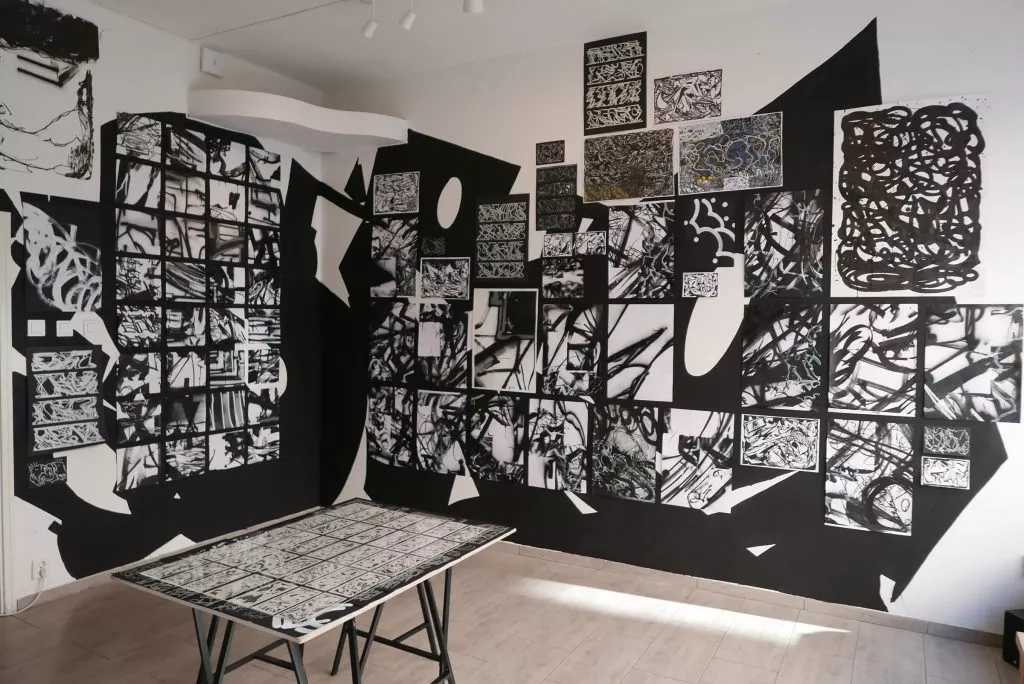
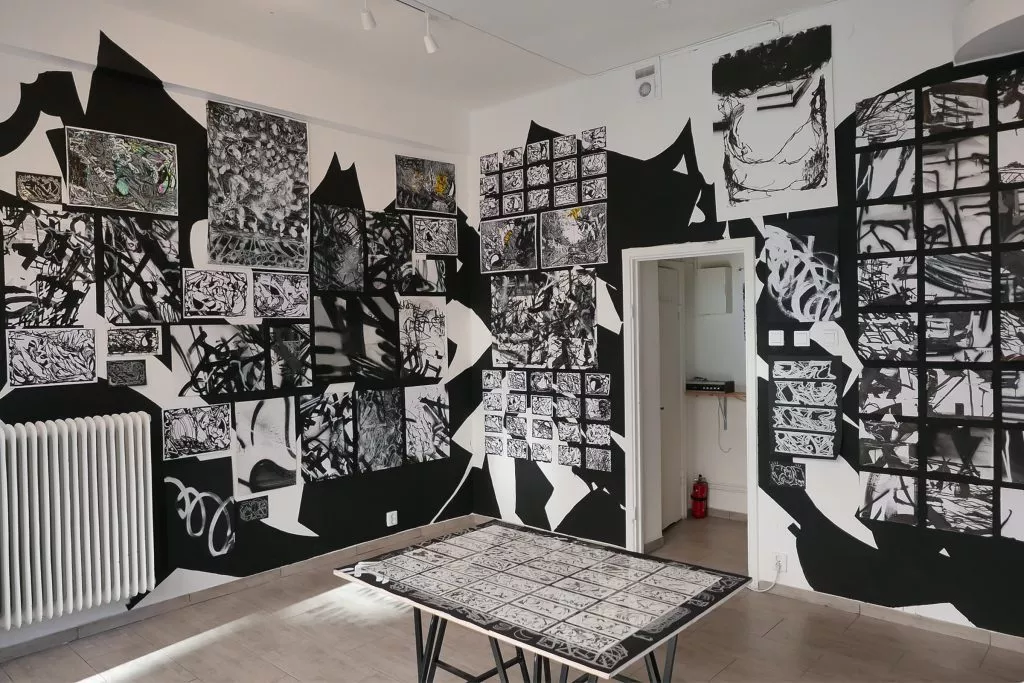
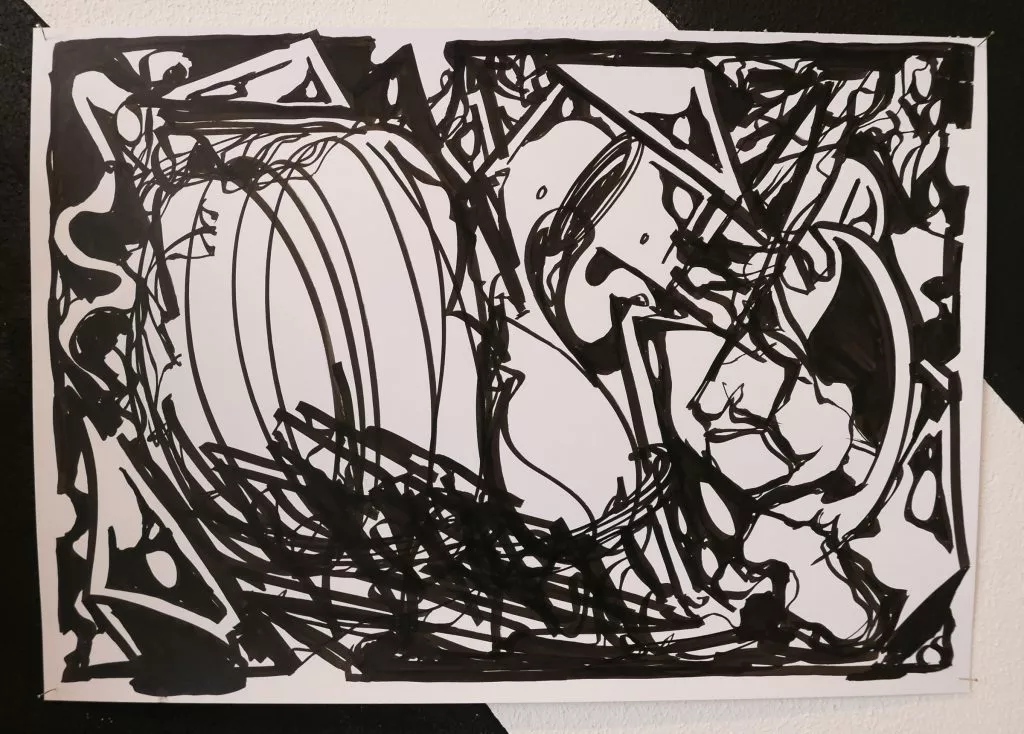
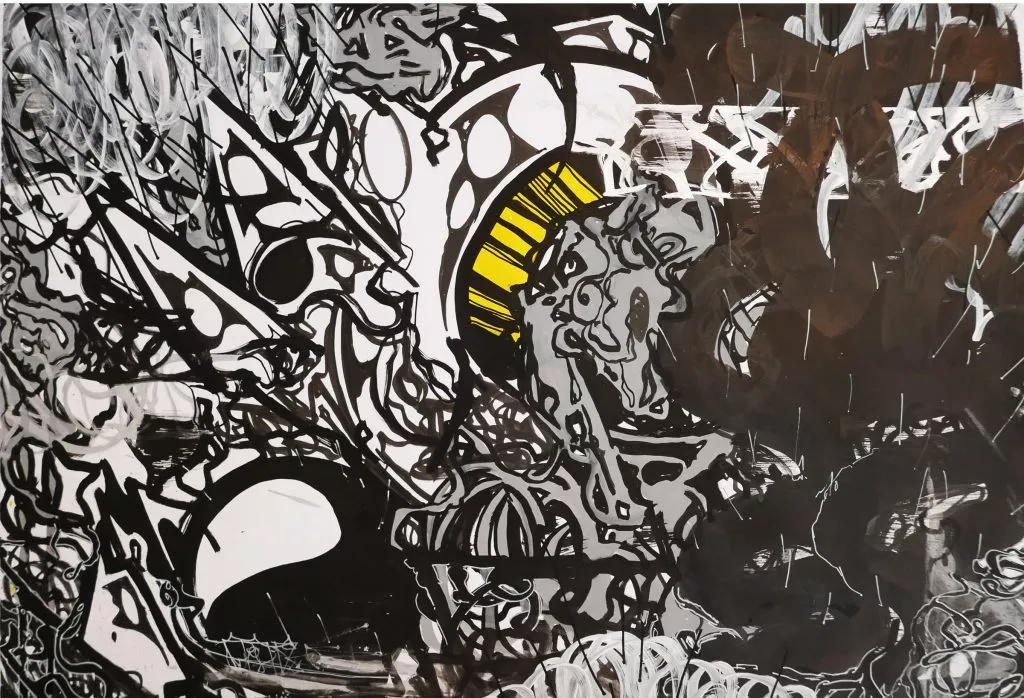
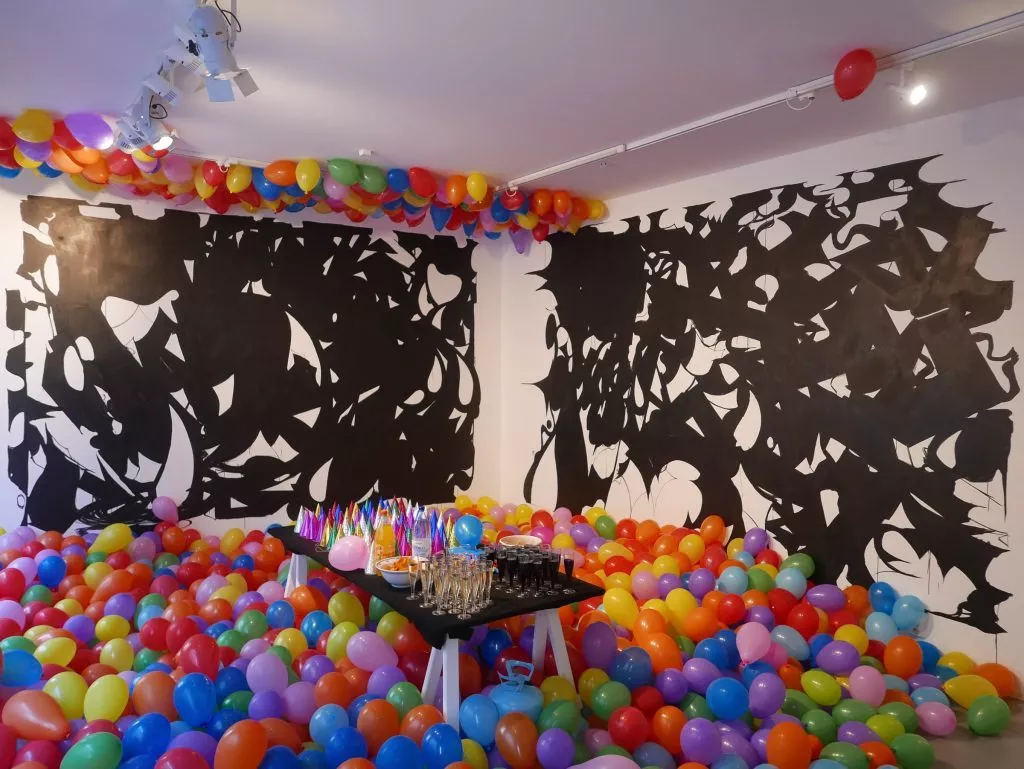
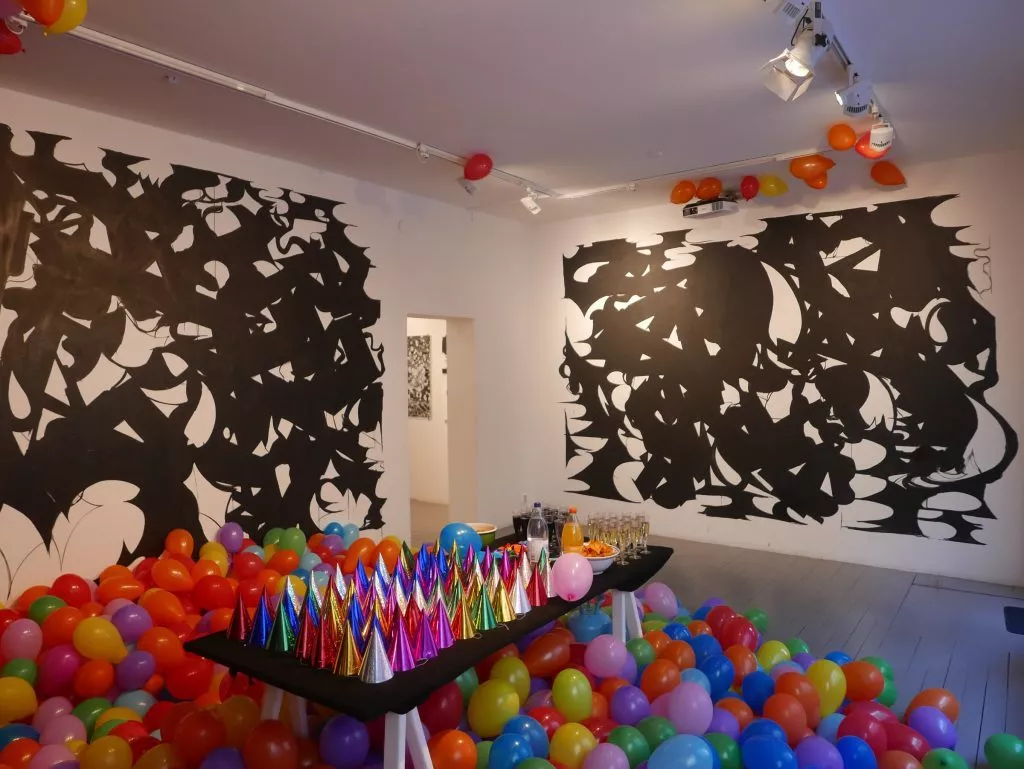
276 views
Categories
Tags:

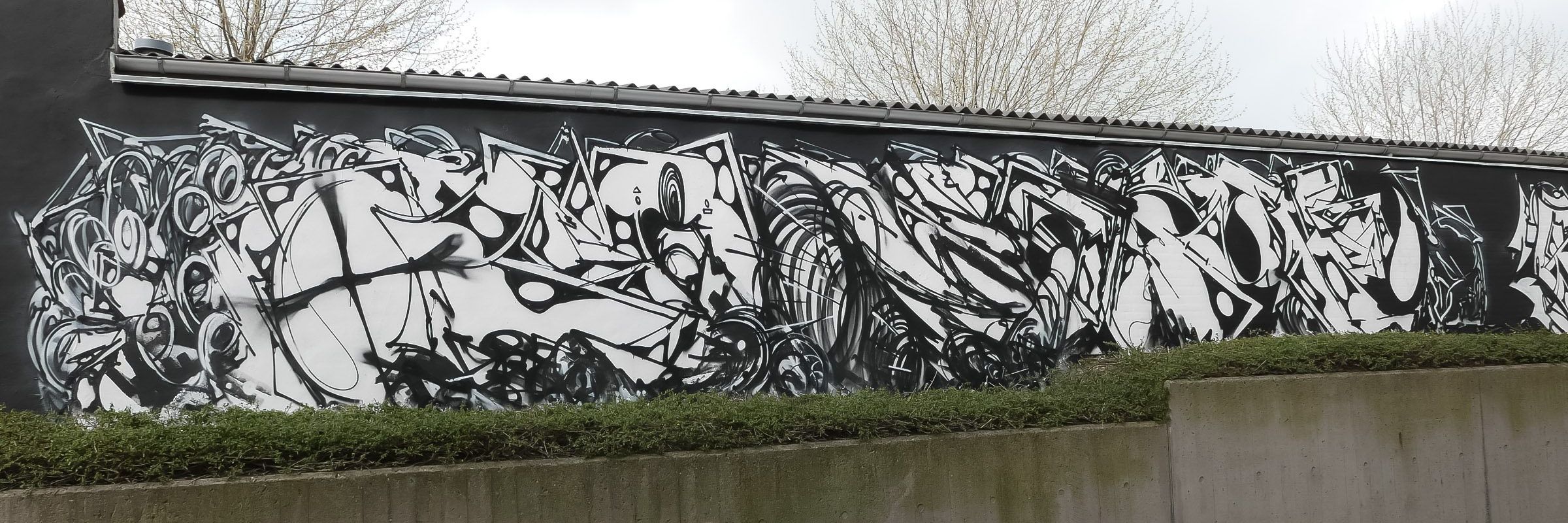

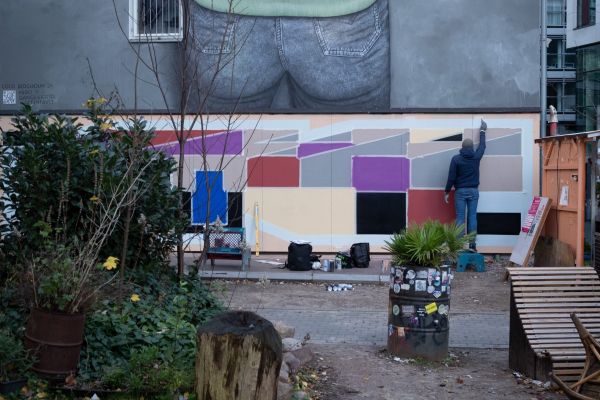
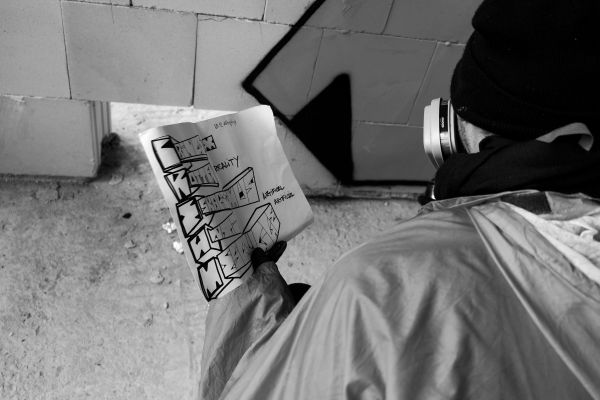
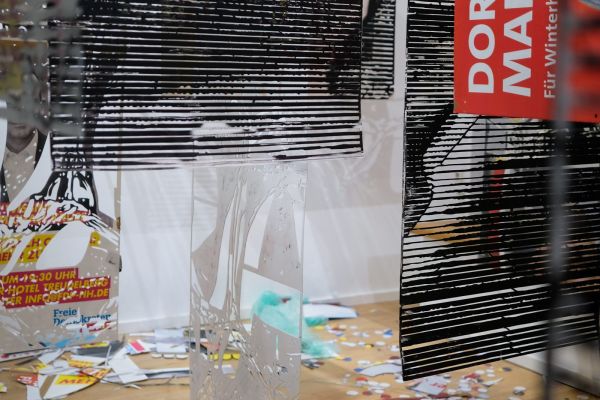
Leave a Reply